British academia and student ‘sex work’ – a story of an embarrassing secret
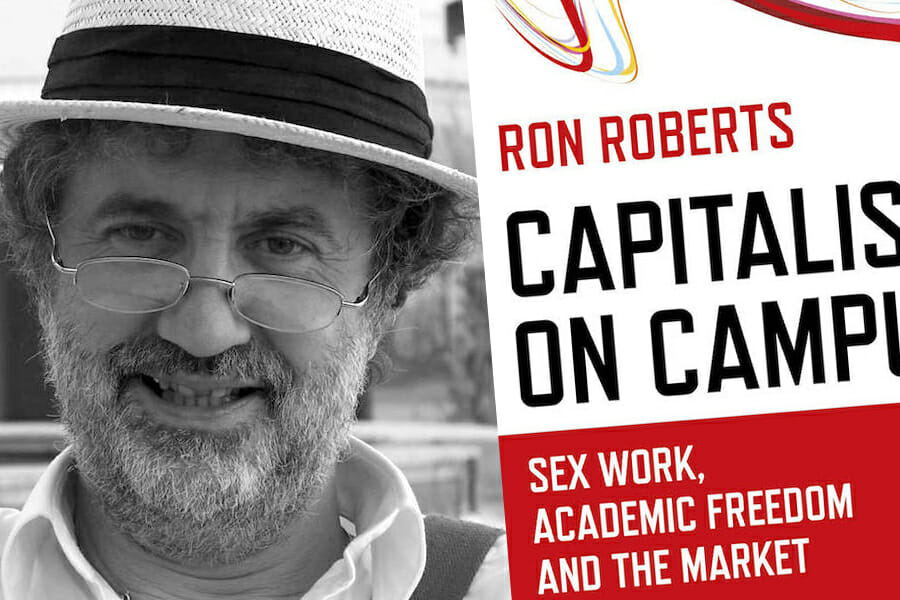
Review of Ron Roberts, Capitalism on Campus: Sex Work, Academic Freedom and the Market, Zero Books, Portland, 2018
Many or most people working in academia in the UK realise that the institution has gone very badly wrong. Universities have, over decades, increasingly been transformed into corporations motivated by the pursuit of profit rather than academic inquiry. Academic staff have lost autonomy to aggressive university leadership teams obsessed with control freakery, image management and league tables. Obtainment of research funding by academic staff is prized above actually producing research, while an increasingly conformist, risk-averse, frankly anti-intellectual ethos results in shorter, blander, shallower and more token published academic books. Students are treated as customers or consumers to be satisfied rather than educated, but fobbed off with increasingly dumbed-down courses as universities seek to extract maximum profit from them while lowering the standards to ensure as many of them as possible achieve good grades and are ‘satisfied’. Bad as all this institutional and ethical decline is, there is a still darker side, which Ron Roberts explores in this highly insightful book.
Dr Roberts is a Chartered Psychologist and Associate Fellow of the British Psychological Society. He was for many years a Senior Lecturer in Psychology at Kingston University, London, and previously held academic posts at the University of Westminster, King’s College Medical School, University College London, St Bartholomew’s Medical School, Queen Mary College and the Tavistock Institute. So he has been able to witness and experience the effects of British academia’s decline at first hand. The first chapter of the book consists of an examination of what Roberts calls the ‘death of the university’, in which he analyses the evolution highlighted above. As he points out, ‘viable research is that which attracts the attentions of academic entrepreneurs and corporate sponsors… The once prevailing view that study and learning was of intrinsic value has been replaced by one in which its value is instrumentalized and costed’ (pp. 13-14). The reader seeking to understand the corporatisation and marketisation of higher education will benefit from Roberts’s summary, in which he cites other scholars who have explored the phenomenon at more length. This chapter serves as a useful bibliographical essay on the subject.
However, the book’s real scoop, and its focus, concerns the subject of students who engage in prostitution and related ‘sex work’ to pay for their higher education. As Roberts highlights, the corporatisation of higher education involves also a rise in ‘sex work’ among students, who do not enjoy the free tuition and maintenance grants they once did in Britain, but are faced with exorbitant costs of study and the prospect of lifelong debt. More sinister still is Roberts’s account of his attempt to research this phenomenon: he found the Kingston University (KU) management obstructed and sabotaged his research out of fear of the bad publicity that would result from the revelation of ‘sex work’ among its students. He describes how the KU ethics committee banned its staff from including KU students in any survey on student sex work, while the KU press office refused to pass on invitations to Roberts from media outlets eager to interview him about this topic, after a Sunday Times article cited him on the subject. The university management was in a bind: it was dependent upon its students engaging in sex work to pay its fees, but aware of the damage to its reputation that would result from this becoming known. Roberts found his pursuit of this research caused him to fall into permanent disfavour with KU management, derailing his academic career.
Roberts is a psychologist, and he brings his expertise and research to bear also on the phenomenon of rising ‘mental health’ issues among students. As he notes, ‘The growth in mental health problems in young people in recent years is better understood, not as an index of personal failure but as a consequence of the brutal economic circumstances which have seen cuts in investment, training and job opportunities for young people, low wages, exorbitant student loans, and tuition fees, cuts to mental health and welfare services, as well as a savage primary and secondary school system where endemic testing has become the norm’ (p. 53). In other words, rising mental health problems are caused by the reality of increasingly harsh economic conditions facing young people, rather than intrinsic psychological issues. Yet there are powerful vested interests in medicalising distress that has economic roots, for this posits the solution as lying not in alleviating the economic conditions for young people, but in providing them with drugs supplied by Big Pharma. Thus, while the university bosses championed the rising tuition fees that drive student mental distress, and the higher education sector is unwilling to address the economic causes of mental health problems, universities provide students with mental health services but with few actual solutions.
There is a contradiction in the conclusions of this excellent book. Roberts correctly attributes rising incidence of student ‘sex work’ to neoliberalism and the corporatisation of higher education, yet attributes the sector’s embarrassment over the subject to what he calls a ‘resurrected moral Victoriana which comes with a return to the naked values of 19th century capitalism’ (p. 40), and students’ own objections to other students engaging in ‘sex work’: ‘the financial restructuring of higher education may be bringing in its wake a more conservative set of political attitudes, in that the more students adopt the identity of an educational consumer the more they absorb and adopt an attitude set, situated within a conservative moral universe’ (p. 31). In this context, he suggests students’ engagement in sex work should be seen as ‘as “an act of resistance to the experience of relative poverty” (McLeod, 1982, p.26) and a marker of rational decision making’ (p. 34). Yet it is contradictory to view students’ ‘sex work’ both as a product of neoliberalism and as emancipatory act of personal affirmation. Individual ‘sex workers’ might like or appreciate what they do, as individual women in other societies might personally be pleased to enter into a polygamous marriage or have their female children genitally mutilated or profit from the abuse or exploitation of other women, but this is not necessarily an indication of whether the phenomenon is positive or not. Ultimately, any normalisation of ‘sex work’ will result in increasing numbers of women being driven to engage in something that for many or most of them is disgusting and abusive, while the commodification of intimate human relations, hence alienation, is increased.
UK university managements’ embarrassment over student ‘sex work’ does not reflect their own conservatism; many of their members themselves sexually exploit vulnerable women. Indeed, at one university at which Roberts worked, a senior university manager was caught having sex with his much younger Faculty Personal Assistant on university premises, with the result that she was forced to resign her post while he remained in his. The embarrassment arises because university managements are aware that public opinion disapproves of the ‘work’ that their students are forced to engage in to survive; in other words, ordinary people are more ‘socially conservative’ than the senior management class. University managements are ready to jump on every ‘progressive’ bandwagon – green politics, Pride, trans rights, Black Lives Matter etc. – and will no doubt publicly embrace ‘sex work’ if and when it is ever socially normalised. Likewise, students disapprove of ‘sex work’ not because they have absorbed the higher education sector’s ‘conservative’ worldview but because they rightly disapprove of the sexual exploitation and abuse of other students. Neoliberalism represents not a return to nineteenth-century capitalism but a new phenomenon in which traditional or conservative values are steadily erased as the market conquers and violates ever more areas of human existence. While under a traditional free-market model, a bank that fails is allowed to go under, under neoliberalism it is bailed out by the state and the taxpayer that are subordinated to financial interests. While William Ewart Gladstone, the great Victorian Liberal, famously tried to help prostitutes escape their situation, the neoliberal impulse is to normalise ‘sex work’ in the cause of producing maximum profit.
This is a minor quibble. Roberts has written a highly intelligent, thought-provoking book based on enormous expertise and extensive research that should be read by everyone concerned by the increasing degradation of the academic sector.
Convicted war-criminal Biljana Plavsic’s name appears on letter in support of UCU’s anti-Ukraine resolution

The University and College Union, the principal trade-union for academic staff in the UK, passed a motion at its congress on 27 May calling for the British government to stop arming Ukraine. The UCU is a corrupt union enjoying a cosy relationship with university managers, and can be relied upon to let its members down wherever possible, but it is also largely controlled by a clique of Corbynites and tankies who use it as a platform to advance their own extremist agenda that has nothing to do with the union’s purported mission. In this case, their agenda involves sabotaging Ukraine’s defence against Putin’s Russia.
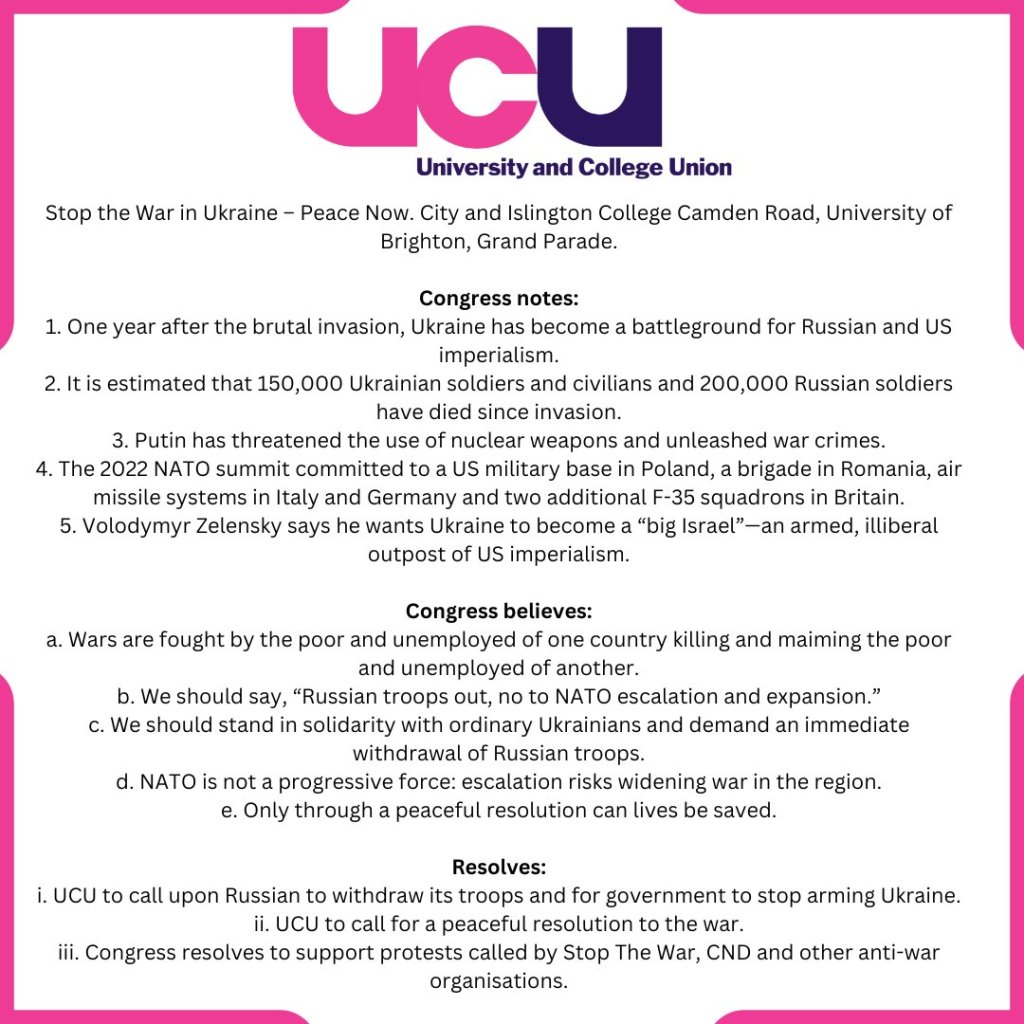
The resolution also committed the UCU to supporting the pro-Putin group ‘Stop the War’, which supports Russia’s annexation of Crimea and blames the war on the West rather than on Russia.
The passage of the resolution was naturally met by widespread outrage among UCU members and others, prompting supporters of the resolution to publish a letter in support of it. Among its listed signatories were Alex Callinicos of the Socialist Workers Party, and Biljana Plavsic, vice-president of ‘Republika Srpska’ during the 1990s Bosnian war and convicted war-criminal.

After Callinicos shared the open letter on Twitter and it was pointed out to him that a convicted war-criminal was listed among its signatories, her name was removed.
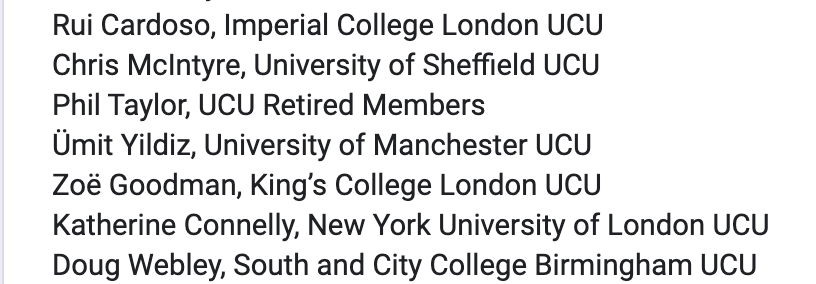
It is unclear whether the letter was signed by the real Biljana Plavsic or by someone seeking to embarrass the supporters of the UCU’s resolution. Either way, that her name should have been included says a lot about the sort of politics these people represent.
Hounslow Green Party stands rabid anti-Semite and Holocaust denier Damian James Read as its candidate in Hanworth Village ward

The Green Party’s candidate for the Hanworth Village ward in the Hounslow Borough Council Election of 5 May 2022 was Damian James Read. Of the seven candidates standing, he came last with 595 out of 3,358 votes – 17.7%. He is featured on the Hounslow Green Party’s website and in its list of candidates. They tell us ‘In his spare-time Damian grows “high carbon capture” trees, and other trees, from seed that he intends to plant around Hanworth to create an “Urban Arboretum”.’

However Read, who previously supported Labour and Jeremy Corbyn and has tweeted under the names @damianjread and @cockneyactivist, has more controversial views. He has a long history of viciously anti-Semitic statements, including Holocaust denial. Under his own name, he shared a link entitled ’21 things about the Holocaust that Zionists don’t want world to know.’

The link took you to a page entitled ‘Holocaust or Holohoax ?’ on a white-supremacist website, which speaks of ‘the alleged murder of 6 million jews by the Germans during World War Two. This is commonly referred to as “The Holocaust”. This alleged historical event is also thrown at anyone objecting to mass immigration in to White Nations as proof of the absolute evil of White Nationalism. The alleged holocaust was also the official reason for setting up the Sate of Israel...’.

When UK prime minister David Cameron tweeted about the ‘millions murdered in the Holocaust, Read tweeted back at him ‘I think you mean 300,000. An horrific event I agree. But not 6 million is it’, and ‘No missing 6 million’.
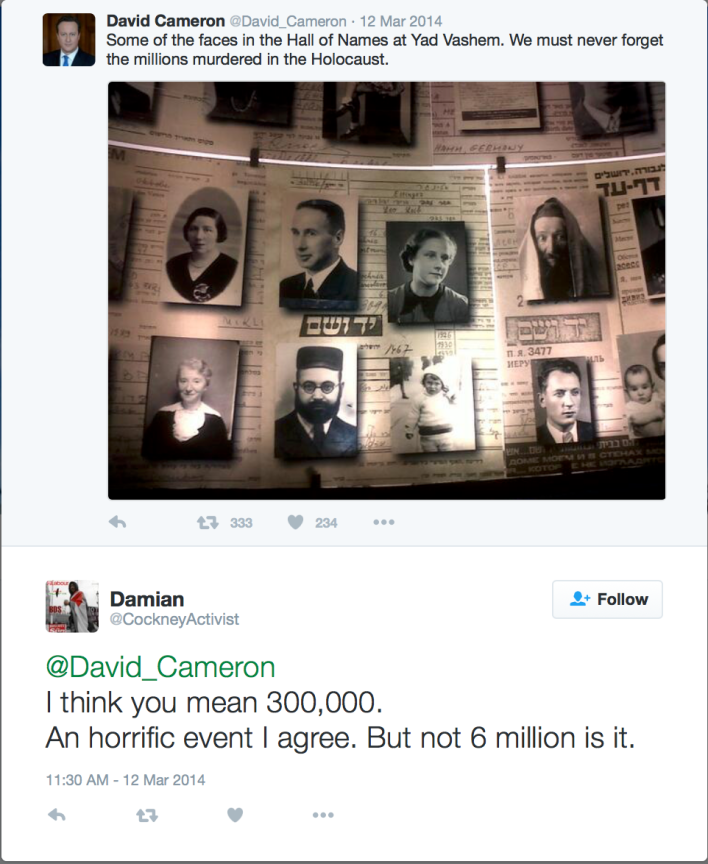
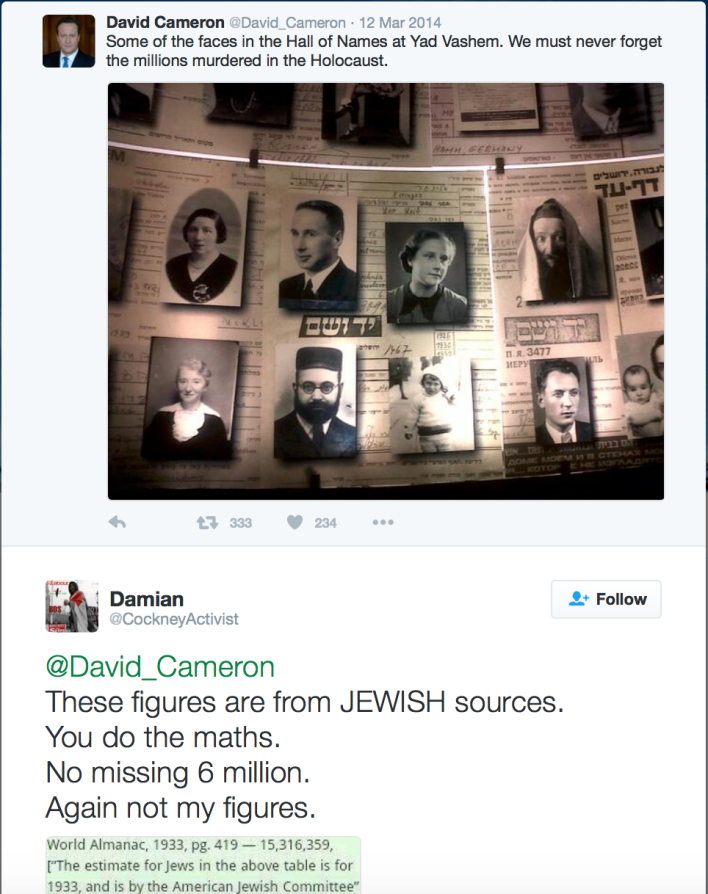
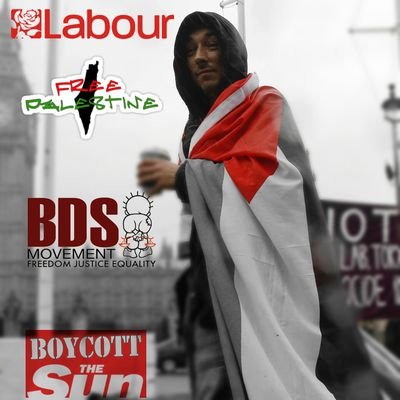
Some other statements Read has either tweeted or ‘liked’ include:
‘the Rothschilds came to control our economy’
‘Zionist controlled media’ (in reference to the international media)
‘Is it true that the BBC is in fact a dept of the Israel Embassy ? Is that why so many Zionist [sic] seem to have been given top jobs ?’
‘Fuck the Zionist Jewish Apartheid state’
‘6 million figure seems to have been repeated ad nauseum throught 20thC. Nazis blamed’
‘it’s God chosen [sic] people. God told they [sic] could commit genocide with impunity just like the Nazis’ (in reference to Israel)
‘I didn’t sell my soul to the Devil, He sold his soul to me #Evil #Israel #Zionist’ (in reference to Netanyahu, whom he depicts with fangs and blood dripping from his mouth, above a dead or injured baby – a version of the traditional ‘blood libel‘ anti-Semitic trope).
(most of these tweets were subsequently deleted; screenshots are below)
All this could have been learned through a minute’s googling. I have written about Read and his anti-Semitic circle before, for Engage – a website devoted to the struggle against anti-Semitism. It raises the question of how carefully the Green Party vets its candidates ?


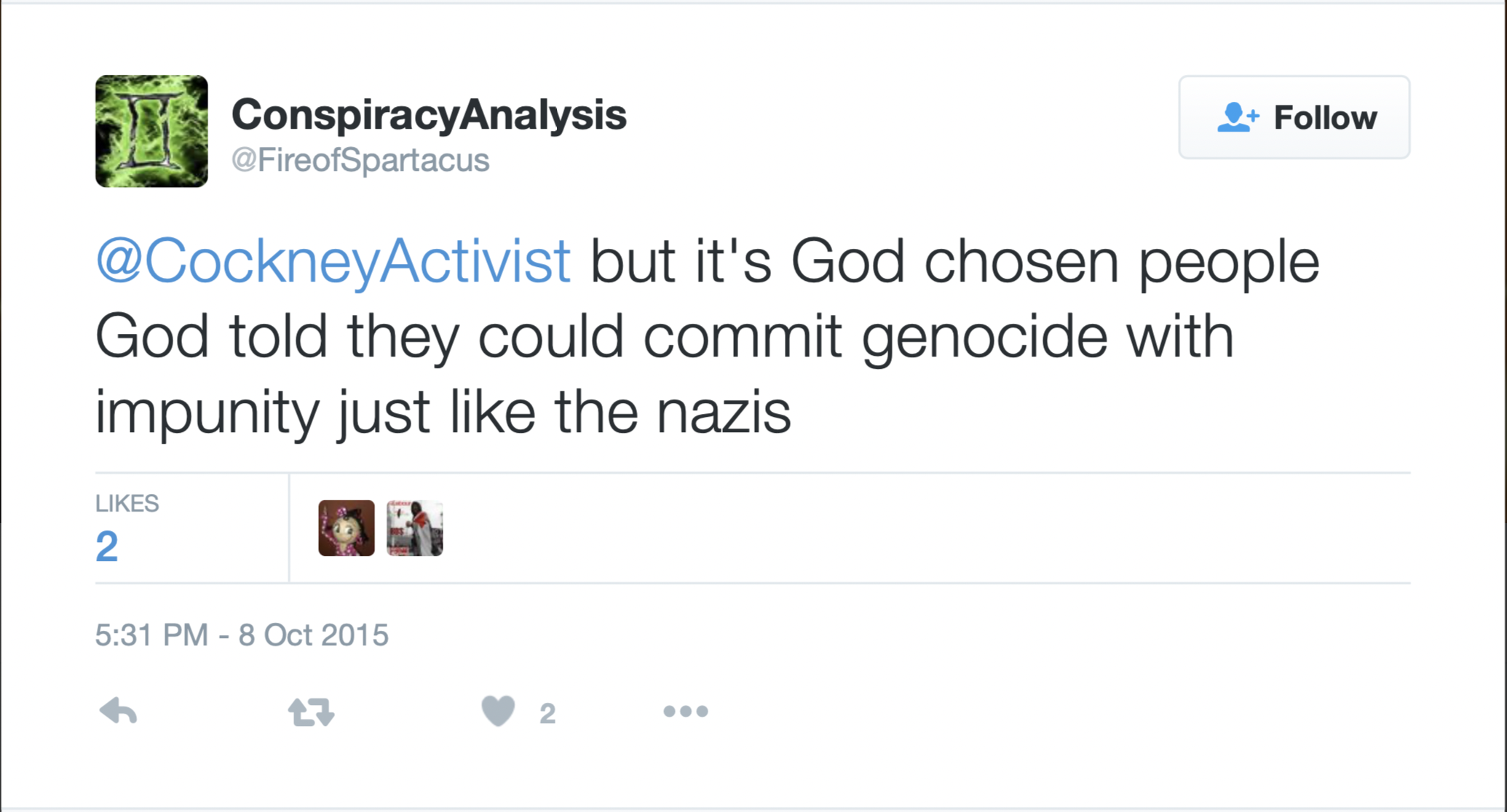

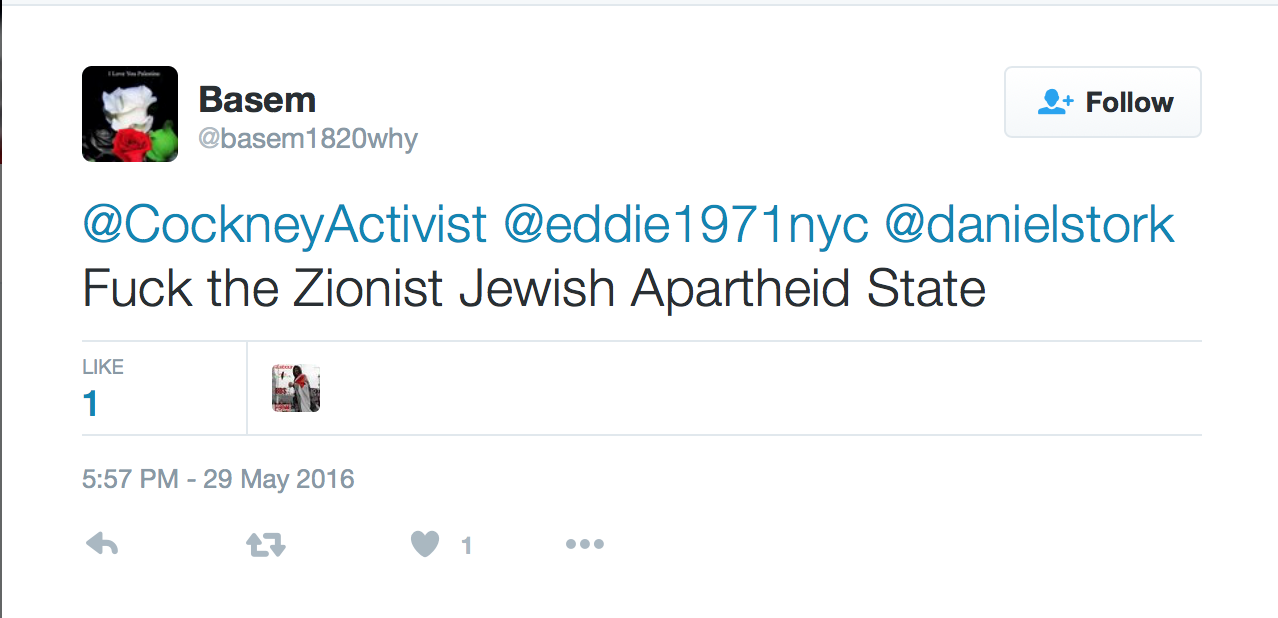
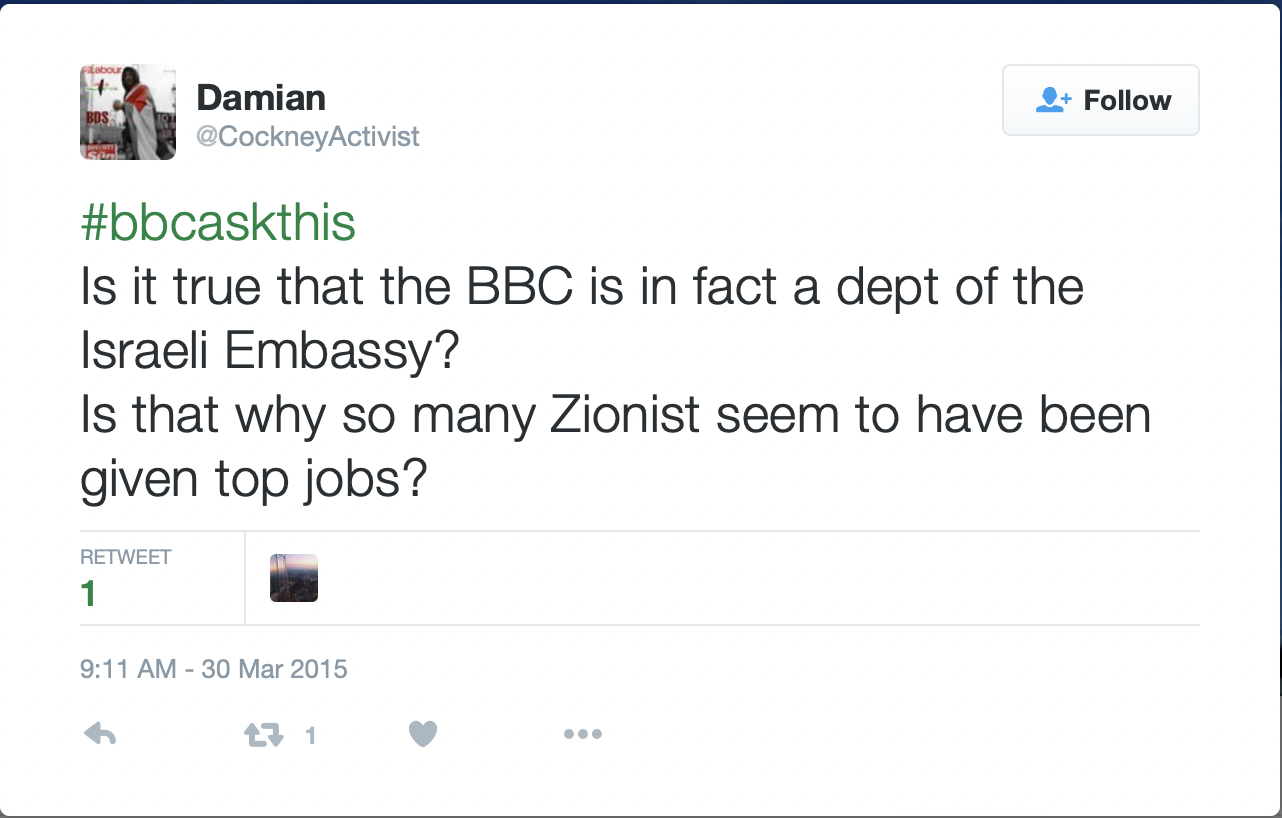

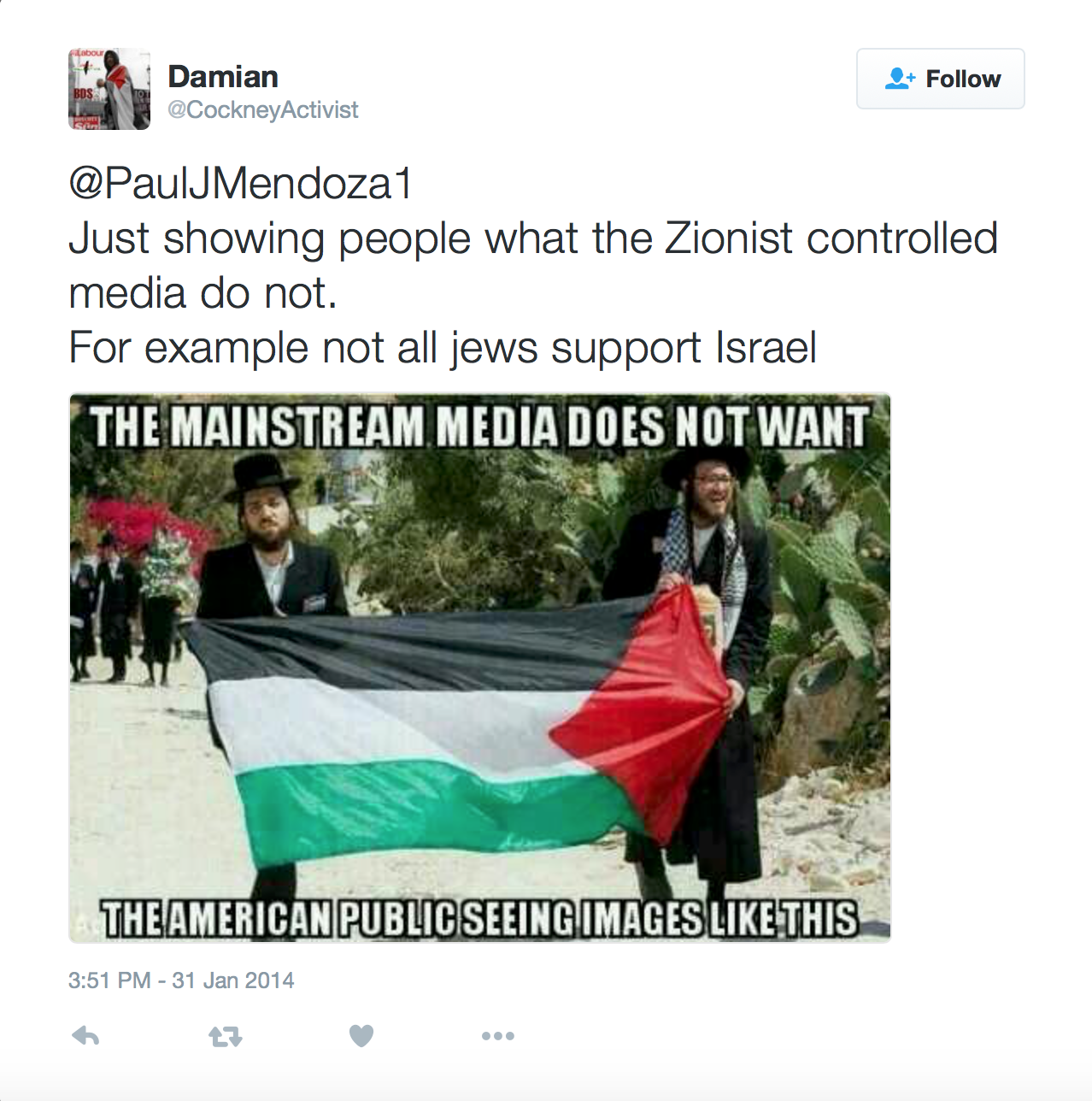
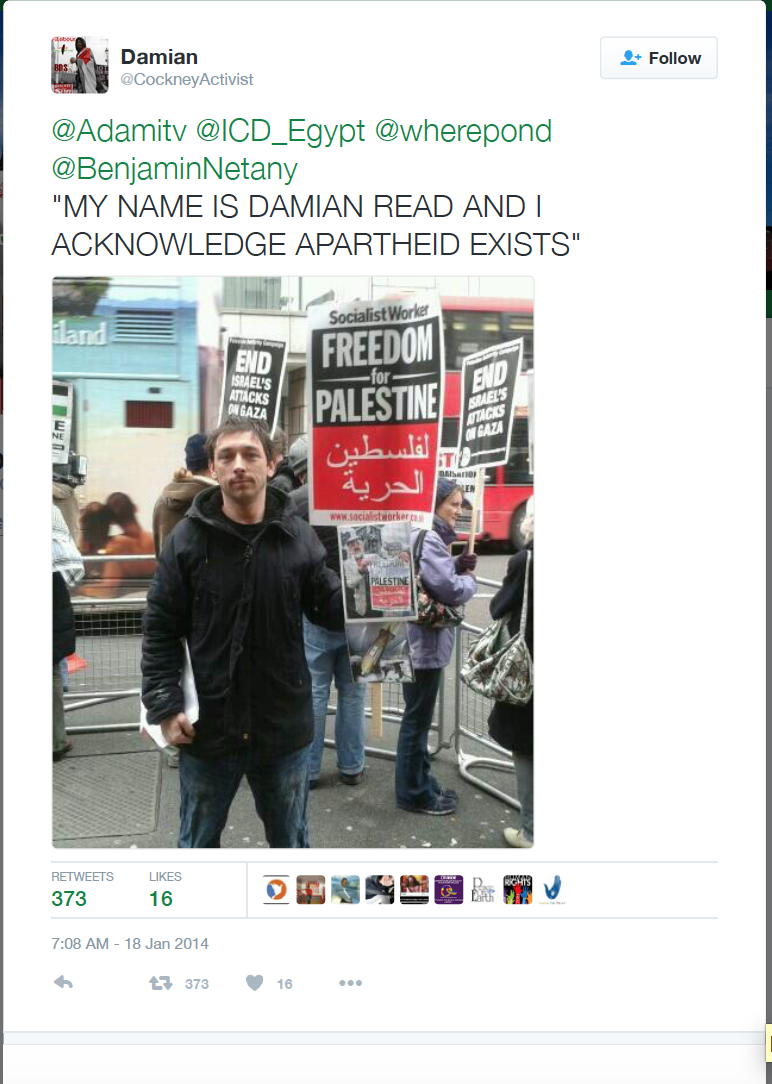
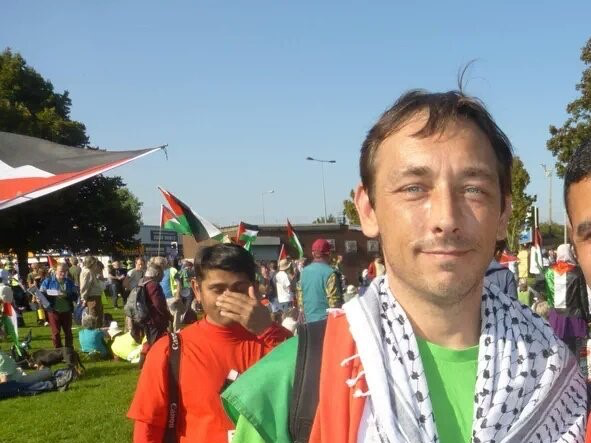

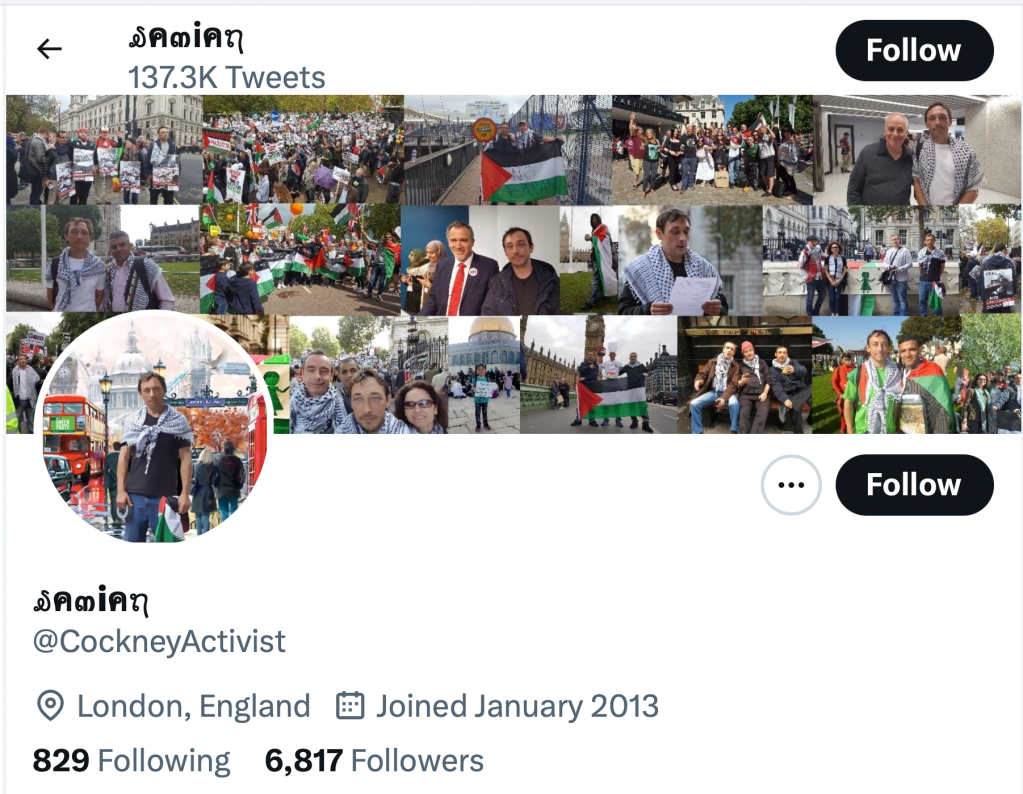
‘Don’t cry for Sarajevo’ – the story of a Serb nationalist in besieged Sarajevo

Review of Visnja Krstajic-Stojanovic, Ne placi za Sarajevom (Don’t cry for Sarajevo), 2nd edition, Trebnik, Belgrade, 1997 (fourth edition published in 2014 by Zavod za udžbenike i nastavna sredstva, Istočno Sarajevo)
This is a book review I’ve been meaning to write for over twenty years, ever since I picked up a copy in a Belgrade bookshop. It provides the shocking testimony of a supporter of the Serb-rebel assault on Bosnia-Hercegovina who actually lived in Sarajevo during the siege and was entirely open about her sympathies – shocking because of the extent to which the author identifies with those who were shelling and besieging the city where she lived, rapidly comes to hate both the city and her own neighbours (including non-nationalist Serbs), and actively works to undermine the country’s resistance. It is sobering reading for anyone whose image of multiethnic coexistence in pre-war Sarajevo is too rose-tinted. My copy of the book is from the second, 1997 edition, though its fourth edition was published in 2014, and the book was the start of the author’s apparently successful career as a novelist.
Visnja Krstajic-Stojanovic was a speech therapist who was born in Zabljak in Montenegro, received her university education in Belgrade and Zagreb then settled in Sarajevo, living there for over thirty years. So she was not an indigenous Bosnian Serb, but an ethnic Serb from outside Bosnia who had nevertheless lived in Sarajevo most of her adult life (Serbian Wikipedia gives her date of birth as 19/12/1938). Her story throws light on the ambiguous effects of decades of Communist-led urbanisation on the character of Sarajevo; the city’s population expanded to several times its original size between 1945 and 1992 due largely to internal immigration, but the consciousness of many of the immigrants was neither Bosnian nor civic. Rather than rapid urbanisation straightforwardly increasing the size of the urban multiethnic constituency that had historically identified with the country of Bosnia-Hercegovina as a multiethnic whole, it also meant the colonisation of the cities and towns by people who did not. Visnja (she will be referred to here by her first name, because this is very much about the intimate feelings of a private individual) claims she identified as a ‘Yugoslav’, yet she is clear that from the start she considered Sarajevo to be a Serb city, her own neighbourhood of Hrasno and Pero Kosoric Square (today Trg Heroja) to be Serb land, and that ‘Bosnia-Hercegovina is, principally, a Serb land’.

Visnja is an educated professional, but not an intellectual nor member of any political organisation, and her reaction to the build-up to the war and its outbreak is entirely instinctive; she does not engage in any protracted analysis or soul-searching to decide about the conflict’s rights or wrongs, or whose side she would be on. The book opens with her watching on TV, along with her husband, brother and sister-in-law, a discussion between Radovan Karadzic, Alija Izetbegovic, Adil Zulfikarpasic and Muhamed Filipovic about a possible Serb-Muslim agreement to keep Bosnia in a rump Yugoslavia along with Serbia and Montenegro, as an alternative to independence. When Izetbegovic does not in the end sign this agreement, Visnja recalls ‘I no longer see Alija as president. I see a monster’. She repeatedly stresses that this incident alone determined her loyalties throughout the months and years that follow; there are virtually no references in the book to any other political events. She opts to remain in Sarajevo after the war began, while many other Serbs were leaving, because of her belief that ‘Sarajevo is ours – Serb. That is why we are staying’.
Visnja is from the start entirely frank with everyone around her about her sympathies. She has absolutely no empathy for her neighbours and colleagues who feel differently about the rights and wrongs of the war, and apart from recording her experiences, the book is above all an account of her constantly increasing sense of betrayal and disillusionment over the fact that her fellow Sarajevans did not share her sympathies. A plane breaks the sound barrier, causing her apartment building to shake and glass to break, and neighbours think they have been shelled; they gather in the corridor and Visnja’s Muslim next-door-neighbour says ‘I fuck their Chetnik mothers… they should all be killed’, which Visnja takes as a personal betrayal. A joyful Croat colleague comes into her office to use her telephone to share the news of Croatian independence, and Visnja furiously tells her to get out, leading to an angry exchange in which the colleague calls Visnja a Chetnik and Visnja subsequently describes her as an Ustasha. Following the ‘bread-queue massacre’ of civilians in Sarajevo by a Serb-rebel (VRS – Army of Republika Srpska) shell on 27 May 1992, Visnja tells her assembled colleagues that ‘That massacre was staged. Alija killed his own people to spread the lie to the world, that the Serbs had done it.’ Visnja’s own Serb director was shocked by this outburst. She meets a stranger in the street who turns out to come from Montenegro like her, and tells him she is proud that a mutual acquaintance is fighting on the Serb-rebel side, and that Bosnia-Hercegovina is a ‘Serb land’, shocking the man. So it continues throughout the book; even after months of war, Visnja further alienates her neighbours when she tells them she does not think it matters if Bosnia is broken up.
Visnja not only expresses her views frankly, but actively agitates for her cause. On two occasions, she turns her television or radio on to the Serb-rebel media channel SRNA and invites her Muslim neighbours for coffee, so that they will see or hear the programmes; she records with satisfaction how one of these neighbours listened to an alleged account on SRNA radio of a Serb being tortured, how with Visnja’s encouragement she assumed the perpetrators were Serb, and how discomfited she was when Visnja revealed that it was a Serb being tortured by ‘Muslims’. Visnja visits VRS-held Grbavica to buy food, and tells Serb soldiers in which buildings Bosnian army staffs are located, and the positions of Bosnian army night patrols, and tells one Serb soldier that ‘We are waiting there for you, the Serb army, to liberate [our] square. To liberate the Serb land’. Visnja’s activism is entirely spontaneous, arising from her convictions, not from membership of any organisation. She describes the evolution of her identity: ‘I was a Yugoslav. Always. Not as a pose but from my heart. My Serbdom within me was not awakened by Radovan Karadzic nor Ratko Mladic. But by Alija Izetbegovic. By various Ganices and Silajdzices. By my Muslim neighbours. And my remaining in Sarajevo when the war began.’
Visnja is frequently disillusioned by her Serb acquaintances. When a group of her Serb neighbours congratulate her for telling a Muslim neighbour that ‘the Serbs are not aggressors’ and ‘are not guilty of anything’, she angrily asks why they did not speak out themselves. An elderly Serb neighbour pays her a visit, bringing the customary packet of coffee as a gift, and tells her his son has joined the Bosnian Territorial Defence; she throws him out of her flat, telling him ‘I no longer ever want to see you again’, and to take his coffee with him. Her Serb director lets her stay at her place, after she is arrested by the police and made to walk back alone at night, but she bitterly recalls that her director later gave radio broadcasts in support of the Bosnian side. She sits with her Serb friend Mirjana in her flat, drinking coffee, when the neighbourhood is shelled by the VRS. Mirjana cheers the shelling, ’Strike, friends, smash, break everything, show them !’, even though she is herself married to a Muslim. Yet when Mirjana unexpectedly becomes pregnant for the first time, Visnja is disappointed that her Serb-nationalist rage steadily cools as she accustoms herself, with increasing happiness, to her role as mother to a Muslim man’s child. Visnja comments sadly that Mirjana ‘defeated the Serb in herself’. On the other hand, when Visnja’s Serb neighbour is decapitated by a VRS shell, she expresses horror, but no anger at the VRS. Indeed, she rationalises the killing of Serb civilians by VRS shelling or snipers by assuming they were actually murdered surreptitiously by the Bosnian forces.

Given Visnja’s behaviour, it is surprising just how long she is tolerated by her neighbours and able to remain in her neighbourhood (although the absence of any dates in the text makes it impossible to determine just how long this was). A Muslim neighbour eventually challenges her to agree that the Serb-rebel forces shelling them are ‘aggressors’ and ‘trash’, and she replies that ‘those up on the hill are not Serb aggressors, nor Serb trash. Up on the hills is the Serb army’. He then slaps her and reports her to the police, who interrogate her again but take no action against her, and no other neighbour assaults her at any time. Only later, when she attempts to contact UNPROFOR surreptitiously to arrange the evacuation of her Serb neighbours, do the police arrest her and her Serb co-conspirators and, according to her disturbing account, severely beat them up, after which she realises she cannot safely remain in the city, and she manages to escape to VRS-held Ilidza, where her husband, who escaped earlier, is waiting for her.
Nevertheless, Visnja’s disillusionment extends also to the Republika Srpska soldiers and authorities; she recalls the VRS soldiers having fun by firing their guns to make her and Mirjana run when they crossed the frontlines to shop in Grbavica, and her own entitled sense of betrayal and contempt when an expected VRS ‘liberation’ of Hrasno did not happen. When she reaches Ilidza, she and her husband are unable to remain there, because when they are assigned a flat by the council, they find it is inhabited by a squatter from the VRS who threatens to kill her husband if he has him evicted, prompting her husband, who is a journalist, to publish a ‘humorous’ article about how real or fake soldiers should break into and appropriate abandoned local homes.
So they move to Belgrade, where Visnja again complains of her treatment: ‘Those in Bosnia have left us without possessions, and the Belgrade bosses leave us without a single dinar to earn’. She also complains about having to live again alongside Croats and Muslims: ‘We in Bosnia had our Muslims and our Croats, and they told us: flee from them, and now they are forcing us to live with their, Serbian and Montenegrin, Muslims and Croats.’ At the end, her feeling is not that she has betrayed Sarajevo, but that it has betrayed her and the Serbs generally: ‘Serb Sarajevo is no more… A traitor-city. Sarajevo has betrayed all of us who loved it and belonged to it. Particularly us Serbs, for we were completely careless specifically because of the love that we felt for our city.’ She concludes with the title of her book, ‘Don’t cry for Sarajevo’ because, in her words, ‘Sarajevo has sold itself like a prostitute. And it has not given just its body – which is still worse and more terrible – it has sold its soul to the devil. Well, let the devil take it for all time.’
Visnja is not a sympathetic narrator. Her identification with the ones who were shelling and besieging the city where she had lived for over thirty years and which she claimed to love, and her absence of empathy or understanding for her neighbours, colleagues and other acquaintances who identified with their own Bosnian side in the war – rather than with those who were besieging and shelling them – are visceral, unquestioning and absolute. Her account is, however, extremely valuable as testimony of the attitude and feelings of Serbs in Bosnia who supported the nationalist side. Although she is not a native-born Bosnian Serb, she recalls also other local Serbs who apparently shared her views. Her testimony is particularly valuable, since it was written for a Serbian rather than a foreign audience, and was not calculated to appeal to Western liberal sensibilities. This is a story of a failure of integration; a valuable historical source for anyone trying to understand the destruction of Bosnia-Hercegovina and the extreme violence of the assault on Sarajevo. If Visnja’s account is anything to go by, Serbs did love Sarajevo, but for some of them, the line between love and hate was a thin one.
The Left is wrong about racism

Witnessing the rise of the Black Lives Matter movement in the UK over the summer, I felt an old sense of frustration: the Left is wrong about racism and has been wrong for a long time. I know this, because I have lived much of my life near the hearts of the black community in London – Notting Hill, North Kensington and Brixton – and attended, back in the 1980s, a very rough and very multiethnic, largely working class and black secondary school: Holland Park Comprehensive. I was a white, Left-wing, ‘right on’ (as ‘woke’ was then called) teenager who joined the Labour Party Young Socialists and agitated against Apartheid South Africa. But my lived experience taught me that racism was not how the Left perceived it.
Our multiracial, mostly Left-liberal teachers taught us that racism was white and anti-black. In English class, we studied Roll of Thunder, Hear my Cry; Mildred Taylor’s 1976 novel about racism in Mississippi in the 1930s. But London in the 1980s was not the Jim Crow South. I honestly cannot recall a single incident at Holland Park of any pupil or teacher ever being racist to a black person to their face. There was, however, plenty of racism, and it primarily involved white and black kids being racist towards ‘Asians’; i.e. children whose families were from India, Pakistan, Bangladesh or Sri Lanka. I recall a playground fight, in which a very large black boy punched a much smaller Asian boy in the face so hard I could hear the blow, and was later told by a teacher it had begun with the black boy racially taunting the Asian. On another occasion, an Asian supply teacher took our class for a lesson and a black boy commented ‘this school is being P***-ised’. A white girl in our class went on a racist rant when a new boy turned out to be Asian, complaining ‘Why can’t we have someone English ?’ An Arab boy was reduced to tears when a white girl he fancied called him a ‘P***’.
Continue reading at Uncancelled
The national identity of the Bosnian Serbs

Originally published as ‘The national identity of the Bosnian Serbs’, in Darko Gavrilović et al., Facing the Past, Searching for the Future: The History of Yugoslavia in the 20th Century (Sremska Kamenica: Institute for Historical Justice and Reconciliation, Centre for History, Democracy and Reconciliation and the Faculty for European Legal-Political Studies, 2010), pp. 179-204
Summary
National identities are not homogenous; differences of identity may be produced within the same nation by differences in region, historical experience, socio-economic background or other factors. The Bosnian Serbs, by virtue of living for centuries in the land of Bosnia or Bosnia-Hercegovina, developed a form of Serb national identity that differed from that of other Serbs, including the Serbs of Serbia (Serbians). Bosnian Serb politicians have pursued specifically Bosnian Serb national politics that regularly set them at loggerheads with the political elite of Serbia. This Bosnian Serb national politics has differed over time and has itself been expressed in different currents, but it has always reflected an identity and worldview that is both Serb and Bosnian. The overriding goals of Bosnian Serb national politics before 1918 were the liberation or autonomy of Bosnia-Hercegovina and unification with Serbia and other lands identified as Serb; the first goal was seen as a means toward the second, but the second did not necessarily negate the first. After 1918, when unification with Serbia was achieved, albeit on a Yugoslav rather than a pan-Serb basis, Bosnian Serb national politics shifted to resisting Bosnian autonomy. After the Axis destruction of Yugoslavia in 1941, the Partisan movement embodied a new expression of Serb-led Bosnian autonomism, which resulted in the unification of Bosnia-Hercegovina and Serbia on a Yugoslav federal basis, as two distinct republics. In the 1990s, with the fall of Communism and collapse of Yugoslavia, Bosnian Serb nationalists rejected Bosnian independence and, with Serbia’s assistance, established a separate Bosnian Serb entity – the ‘Serb Republic’ or ‘Republika Srpska’.
It was the Serbian Orthodox Church that provided the basis for a single Serb national identity stretching across the western Balkans. The autonomy enjoyed by the Bosnian Orthodox community under the Ottomans, combined with the memory, preserved by the Orthodox clergy, of the Serbian medieval state, were the twin foundations of Bosnian Serb nationhood. This nationhood was then conditioned by the multi-religious or multi-national character of Bosnian society. The fact that up until the end of World War I, the Bosnian Serb peasants were predominantly non-free and legally subordinate to Muslim landlords conditioned the course of Bosnian Serb national politics. The impossibility of the Serb political classes satisfying the class aspirations of their Serb peasant constituents, while at the same time winning over the Bosnian Muslims to Serb national politics, was the principal structural weakness of Bosnian Serb nationalism. It ensured a permanent, irresolvable tension, between on the one hand the Bosnian Serb assumption that all Bosnian Muslims (and Catholics) were really Serb and that Bosnia-Hercegovina was a Serb land, and on the de-facto treatment of the Muslims and Croats as the national ‘others’, and ultimately of Bosnia-Hercegovina as an alien entity oppressing the Orthodox Serbs, and from which they sought autonomy. During the interwar period, Bosnian Serb weakness vis-à-vis the Muslims in the struggle for control of Bosnia-Hercegovina manifested itself in support for the country’s partition. Although the Serb-dominated Bosnian Partisan movement resulted in the establishment of a unitary Bosnian republic within federal Yugoslavia, the prospect of independence for a unitary and Muslim-led Bosnia-Hercegovina resulted in a new, and this time successful, Bosnian Serb partitionist drive.
Given the repeated conflict between the Bosnian Serb political classes on the one hand and those of Serbia on the other, the establishment of the Republika Srpska as an autonomous entity separate from Serbia should be seen as a more natural outcome of Bosnian Serb national aspirations than a ‘Great Serbia’ that proved repeatedly unrealisable.
The National identity of the Bosnian Serbs
Nationalists like to portray their nation as being homogenous; a ‘seamless garment’. Yet nations and national identities are in fact heterogeneous; differences of identity may be produced within the same nation by differences in region, historical experience, socio-economic background or other factors. As there are differences of identity among Croats, between those from Zagorje, Slavonia, Istria, Dalmatia, Bosnia and so forth; and among Albanians, between those from Albania proper, Kosovo, Macedonia and so forth; so there are differences among Serbs, between those from Serbia proper, Vojvodina, Kosovo, Bosnia, Lika and so forth. This study will discuss the specific identity of the Bosnian Serbs, its differences with the identity of the Serbs from Serbia, and the historical consequences of this difference. It will trace the historical origins of the difference between the respective national identities of the Bosnian Serbs and of the Serbs from Serbia (henceforth referred to as ‘Serbians’ – Srbijanci). It will explore how this difference of identity resulted in different political goals and ideologies between the political classes of these two branches of the Serb nation, throughout the existence of Yugoslavia and up until the present day.
The original Serbs arrived in the western Balkans, including Bosnia, in the seventh century A.D. It is not, however, possible to trace the existence of the Serb nation in Bosnia, in unbroken continuity, back to this medieval population. The population of medieval Bosnia, which emerged as an effectively independent state under Ban Kulin in about 1180 and reached its greatest territorial extent under King Tvrtko in the second half of the fourteenth century, had ethnically heterogeneous roots. These included both the pre-Slavic (Illyrian or Vlach) population of the region and the Slavic settlers, including Serbs and Croats, who arrived during the early middle ages. But there is no correlation between these medieval ethnic divisions among Bosnians and the contemporary ethnic division between Bosnian Serbs, Bosnian Croats and Bosnian Muslims or Bosniaks. The latter was the product of religious divisions created by the long period of Ottoman rule, which began definitely when the medieval Bosnian kingdom fell to the Ottomans in 1463. Prior to the Ottoman arrival, the Bosnian population had been principally divided between Catholics and between adherents of the Church of Bosnia, deemed heretical by the Catholic Church, with a smaller population of Orthodox in Hum or Hercegovina, which was acquired by Bosnia only in the fourteenth century. The Ottoman occupation resulted in the conversion of the greatest part of the Bosnian population to either Islam or Serbian Orthodoxy, while large numbers of Orthodox Vlachs migrated to Bosnia in the same period. It was this Orthodox population – Slavic and Vlach – that formed the basis of the modern Bosnian Serb nationality, while the Islamic population formed the basis of the Bosnian Muslim or Bosniak nationality and the Catholic population formed the basis for the Croat nationality. All three modern Bosnian nationalities have diverse ethnic origins; each of them is descended both from the original, already heterogeneous Bosnian medieval population and from more recent arrivals.(1)
Ethnic Serbs are spread across the territory of the western Balkans; after Serbia itself, the largest populations of Serbs are in Bosnia-Hercegovina followed by Croatia and Montenegro, with smaller numbers in several other states of the region. This does not correspond to the historic borders of any Serbian state. Although Bosnia was briefly under Serbian suzerainty during the middle ages, the largest concentration of ethnic Serbs in Croatia and Bosnia-Hercegovina, prior to the 1990s, was in western Bosnia and central Croatia; territories that mostly had never formed part of any Serbian state. It was the Serbian Orthodox Church, not any historic shared Serbian statehood or primordial ethnicity, that formed the underpinning for a single Serb nation spread across the western Balkans. In 1557, the Ottomans re-established the Serbian Orthodox patriarchate, with its see in Peć in present-day Kosovo. Stevan K. Pavlowitch says of the re-established patriarchate that it ‘provided a well-organised framework for its faithful over all the European lands controlled by the Turks, and remained across Hungarian and Venetian borders even after the tide had receded. It acted on behalf of the “Serbian nation”, and spread the name “Serb”. In fact, once could say that it was only then that something approaching a Serbian ethnic consciousness appeared.’(2) Ironically, the Ottoman Empire was the state that united most of the lands inhabited by substantial numbers of Serbs , for whom the restored Serbian church provided unity; as Michael Boro Petrovich writes, ‘from 1557 until the Peace of Požarevac (Passarowitz) in 1718 virtually all Serbs found themselves together in an organization of their own.’ Furthermore, ‘it was the political, social and cultural role of the Serbian church that gave it such decisive importance in the preservation and rebirth of the Serbian nation. In effect, it was the Serbian church that provided the bridge between the medieval Serbian state and a modern secular Serbia in the early nineteenth century. Thanks to Ottoman policy, the patriarchate of Peć was the bearer not only of spiritual but of secular authority, as the legally confirmed organisation of the Serbian millet.’(3)
Nevertheless, if the existence of a unified Serbian Orthodox Church laid the basis for a single Serb people sharing a national identity, the division of the Serbs between different states and provinces laid the basis for different interpretations of this national identity. Following their conquest of Bosnia in 1463, the Ottomans re-established Bosnia as a sanjak – an administrative-territorial unit. This was followed in 1580 by the establishment of an eyalet of Bosnia – a larger administrative territorial unit that grouped the Bosnian sanjak with other sanjaks. Though the borders of the eyalet of Bosnia fluctuated greatly over the succeeding decades and centuries, and at times included large parts of what are now Croatia, Serbia and Montenegro, nevertheless this entity – itself the heir of the medieval Bosnian kingdom – was the direct precursor of the modern province and subsequently republic of Bosnia-Hercegovina. The Serb Orthodox inhabitants of the eyalet of Bosnia, over centuries of living in it, evolved a consciousness of Bosnia as their country; i.e. a national identity that was Bosnian as well as Serb. This has meant a somewhat different national identity to that of the Serbians, and frequently to different perceptions of national interest, even to conflicts between these two branches of the Serb nation. In this respect, the Bosnian Serbs resemble the Montenegrins, for whom identification with the Serb nation had to be reconciled with awareness of their own distinct national tradition arising from having inhabited a distinct country of their own.(4) Like the Montenegrins, Bosnian Serbs might differ among themselves, or over time, on the question of how far to submerge their own country and identity in the wider Serb nation. Unlike the Montenegrins, the Bosnian Serbs never evolved into a wholly separate nation in their own right. But like the Montenegrins, the Bosnian Serbs’ distinct national tradition, arising from having inhabited a homeland different from other Serbs, helped to ensure that this homeland would never be united with Serbia into a single, Great Serb state.
The Serbian socialist Svetozar Marković was among the first to caution that, given their long history of separation, unity between the different branches of the Serb nation would pose its own problems. In his 1872 essay ‘Serbia in the East’, Marković wrote:
But Prince Mihailo himself was unable to establish a Great Serbia… We maintain that this policy came to nothing because against it were insurmountable obstacles. The first and greatest obstacle was independent Montenegro, which looked upon Hercegovina, Bosnia and Old Serbia exactly as Serbia did and, and which furthermore openly strove to found a completely independent Serb state. The second great obstacle was the Bosnian aristocracy with its existing rights… To acquire Bosnia by war would mean provoking a social revolution in Bosnia, destroying the local aristocracy, which has existed there for several centuries; and when the delighted common people had liberated itself from one master, would it then have consented to come under the Serbian gendarmes, captains and other masters ? (5)
Marković correctly predicted that the Serb population of Bosnia-Hercegovina would prove as much, or more, of an obstacle to Serbia’s annexation of Bosnia-Hercegovina as the Muslim landlord class. Successive events in the one-hundred and twenty years after Marković’s death in 1875 would prove him right.
The autonomy enjoyed by the Bosnian Orthodox community under the Ottomans, combined with the memory, preserved by the Orthodox clergy, of the Serbian medieval state, were the twin foundations of Bosnian Serb nationhood. At the same time, centuries of living in the land of Bosnia, as distinct from Serbia, gave the Bosnian Serb urban elite an awareness of, and patriotic identification with, their Bosnian homeland that in some ways resembled that of the Muslims. Indeed, early Bosnian Serb nationalists tended to espouse a nationalism that was inclusive of the Bosnian Muslim elite, not anti-Islamic, and that while looking to Serbia, at the same time expressed its awareness of Bosnia as a distinct land in its own right. In the late 1840s a delegation of Serbs from Bosnia visited Russian political circles, declaring ‘that the Bosniaks would gladly be the rulers of their country while paying the Sultan a definite tribute.’ Their project was ‘inspired by the example of their neighbour and sister Serbia.’(6) When the Bosnian Christians, above all Orthodox, rebelled against the Ottomans in the 1870s, the rebellion, under the leadership of the Bosnian Serb urban middle classes, was both Serb-nationalist and Bosnian-patriotic in organisation. Representatives of the Bosnian rebel bands held a gathering at the village of Jamnica in December 1874, one that was referred to subsequently as the ‘Bosnian national parliament‘. Among its most prominent actions were an appeal to the Great Powers for international recognition, the appointment of a ‘provisional government‘ known as the ‘National Council for Liberation in Bosnia‘, and the framing of an appeal to the Bosnian Muslims to join the rebellion, promising full respect for their religion and property.(7) In July 1876, the Bosnian rebel leaders issued a ‘Proclamation to the Bosnian people’ in which they announced that ‘we, the entire leadership of the Bosnian rebel detachments as the only legal representatives of the Serb land of Bosnia… proclaim that our homeland Bosnia be joined to the principality of Serbia’.(8) Yet the rebels were aware that Bosnian and Serbian interests had diverged following Belgrade’s signing of a peace treaty with the Porte in March 1877, when it was felt among them that ‘nothing now links us with Serbia’.(9) The rebels’ ‘Provisional National Bosnian Government‘, formed in October of the same year, announced that ‘the Bosnian nation has never wanted, nor now wants, to become a constituent part of any other state’. It ‘wishes to unite with other Serbian lands. If that unification, in the present political circumstances of Europe, is not permitted us as we wish, then the Bosnian nation wishes to have its complete freedom and self government’, without prejudicing its right to unite with other Serb lands in the future.(10)
Bosnian Serb nationalism, as it emerged in the nineteenth century, therefore favoured both unification with Serbia and other Serb lands and sovereignty for Bosnia. This duality found its most eloquent spokesman in the Bosnian Serb revolutionary Vaso Pelagić. The ‘Ustasha proclamation‘ put forward by Pelagić during the rebellion of 1875-78 called for Bosnia-Hercegovina‘s unification with ‘both Serbian principalities [Serbia and Montenegro]’, but made clear that the carrier of sovereignty in the land of Bosnia should be its own parliament with its own government.(11) Pelagić advocated that ‘Bosnia-Hercegovina become an independent state or enter a brotherly and free union with the Serbian Principality and other nations of the Danubian region and the Balkan peninsula’.(12) In this period, Bosnian sovereignty was seen as a stepping-stone toward unity with Serbia; no possible contradiction was envisaged between the two.
The Bosnian rebellion of 1875-1878 nevertheless provided an early manifestation of the principal structural weakness of Bosnian Serb nationalism: its inability fully to embrace the Muslims and the Bosnian Orthodox peasantry at the same time. Under the Ottomans, the landlord class was Islamised. Although by the 1870s most Muslim and the majority of Catholic peasants were free, in that they were not fiscally or legally obliged to the Muslim landlord class, the majority of Orthodox peasants remained subordinate to the Muslim landlords. Although this subordination was not strictly speaking ‘feudal’, this fiscal and legal subordination resembled in many respects the serfdom of Christian feudal Europe. These ‘enserfed’ Orthodox peasants naturally viewed the Muslim landlord class as the national oppressor. To satisfy the Bosnian Serb masses, the Bosnian Serb national movement would have to satisfy the class aspirations of the peasantry vis-à-vis the Muslim landlords. Yet to conquer Bosnia-Hercegovina, the Bosnian Serb national movement would have to embrace the Muslim element, which meant providing guarantees for the Muslim landlords. This dilemma was ultimately inescapable, and explains in part the failure of the rebellion of 1875-1878. The Bosnian Serb merchants who provided most of the rebel leaders shared their Serb national identity with the peasants that comprised the rebel rank and file, but enjoyed close relations with the Muslim elite, with whom they were, as tax farmers, complicit in exploiting the peasantry. The rebel leaders consequently fell between two stools: their rejection of the expropriation of the Muslim landlords alienated the rebel masses while their aim of unification with Serbia prevented them from winning significant Muslim or Croat support. The rebellion therefore stagnated and ended in failure.(13)
Bosnia, which from the 1870s became ‘Bosnia-Hercegovina, was viewed by Bosnian Serb nationalists as a ‘Serb land’, and the Bosnian Muslims and Catholics as Muslim and Catholic Serbs. This became more problematic, however, following the occupation of the country by Austria-Hungary in 1878, and particularly after Benjamin Kállay became Austro-Hungarian Finance Minister, therefore ruler of Bosnia-Hercegovina, in 1882. Kállay preserved the economic privileges of the Muslim landlords and the Muslim domination of municipal government. He sought to create a new, ‘Bosniak‘ national identity that would be inter-confessional and inclusive of all Bosnian citizens – a project known as Bošnjaštvo, that translates roughly as ‘Bosniakism‘. From 1883, the language of state was known as ‘Bosnian‘. In 1889, the regime introduced a Bosnian flag and coat-of-arms, designed on the basis of research into historical Bosnian symbols and intended to signify a Bosnian identity wholly distinct from the Serbian and the Croatian.(14) The government‘s assumption of the right to appoint Orthodox Metropolitans for Bosnia-Hercegovina, interference in municipal government, removal of municipal control over schools, forced transformation of Serb Orthodox schools into inter-confessional state schools, restrictions on the use of the Cyrillic alphabet and ban on the official use of the Serb name, represented a violation of rights that the Serb Orthodox community had enjoyed in the Ottoman Empire. This united the Bosnian Serb population against the government and behind a specifically Serb-national movement for church and school autonomy. This meant that the Serb-nationalist view of all Bosnia-Hercegovina and of all Catholics and Muslims as ‘Serb’ was now at loggerheads with the Serb national movements goals of autonomy vis-à-vis the central Bosnian authorities and separateness vis-à-vis other Bosnians in the fields of education and language. Bosnian Serb nationalism was pulling simultaneously in opposite directions.
A further contradiction preventing the achievement of a ‘Serb Bosnia’ was the class conflict between the ‘enserfed’ Orthodox peasantry and the Muslim landlord class. The Serb political classes were required, under pressure from the Serb peasant populace, to push for reform of agrarian relations in Bosnia-Hercegovina. Yet this drew a wedge between them and the Muslims, preventing the absorption of the latter into Serb national politics. Thus, leaders of the Serb and Muslim autonomist movements met at Kiseljak near Sarajevo in August 1901 and produced a draft of an agreement for cooperation that called for an autonomous Bosnia-Hercegovina with a Serb governor and Muslim vice-governor under the aegis of the Ottoman Sultan. But on account of disagreement over the agrarian question, this draft agreement remained unsigned on the Muslim side.(15) Despite their shared opposition to Habsburg rule and goal of Bosnian autonomy, the Serb and Muslim national movements crystallised wholly distinct from one another in the period of this rule. Hence the foundation of the ‘Serb National Organisation’ in 1907 in parallel to the ‘Muslim National Organisation’, as well as the ‘Croat National Union’, formed the year before. Hence also the formation of wholly separate cultural societies for the three principal Bosnian nationalities in the early years of the twentieth centuries: the Muslim society ‘Gajret’ (‘Zeal’); the Serb ‘Prosvjeta’ (‘Enlightenment’); and the Croat ‘Napredak’ (‘Progress’). These societies then became the principal institutional promoters of national identity in Bosnia-Hercegovina in the decades that followed; through financing the education of students from the ranks of their respective nationalities, they acted to create nationally conscious intelligentsias.(16) Meanwhile, the Austro-Hungarian occupation had been followed by the increasing foundation of nationally exclusive Serb and Croat newspapers, usually by Serbs and Croats from the Habsburg lands or by Bosnians educated among them who adopted their respective national outlooks.(17) This acted to consolidate the Bosnian Serb and Croat reading publics as distinct, nationally homogenous ‘imagined communities’.
The highpoint of Serb-nationalist Bosnian autonomism was nevertheless reached in the period of the Austro-Hungarian annexation of Bosnia-Hercegovina in 1908. This annexation was itself prompted by the Young Turk revolution of that year and the restoration of the Ottoman constitution, and by the consequent joint demand of the Muslim National Organisation and Serb National Organisation – formally submitted by Ali-beg Firdus and Gligorije Jeftanović, on behalf of the two organisations, to Ban István Burián – that Bosnia-Hercegovina, too, be granted a constitution and parliament. When Austria-Hungary responded to the Young Turk and Bosnian autonomist threat to its control of the country by annexing Bosnia-Hercegovina on 5 October, the two parties responded with a joint proclamation to the ‘people of Bosnia-Hercegovina’, asserting the unity of Serbs and Muslims in the struggle for Bosnian autonomy. In 1909, Serb National Organisation representative Nikola Stojanović issued a denunciation of the draft Austro-Hungarian constitution for Bosnia-Hercegovina, in the process making an eloquent demand for Bosnian national self-determination. Stojanović denounced the division of the Bosnian parliament by curia on the grounds that ‘the government creates for us religious curias and in that way sanctions the earlier conflicts.’ In contrast to this, ‘the Serb National Organisation expressed as its programme the universal, equal, secret and direct right to vote’. This, it should be said, was linked to Stojanović‘s accusation that the curial system was intended ‘to bypass the Orthodox majority’. He went on: ‘Complete autonomy is the only true solution to the question of Bosnia-Hercegovina, because only this protects the Bosniaks and Hercegovinians, joined by a common past and origins, from assimilation by heterogeneous elements, and guarantees the indivisibility of Bosnia and Hercegovina; only on this basis can control by the signatory powers to the Berlin Congress be replaced by the self-control of a single nation, one that Austria-Hungary itself has declared to be mature.’(18)
Stojanović’s statement reflected the still-dominant belief among Bosnian Serb nationalists that Bosnia-Hercegovina could emerge as a unitary, self-governing nation-state – both Bosnian and Serb – formed around the core of the Orthodox majority. Yet in this period, the Bosnian Serb political elite began to divide between the supporters of the older, more conservative, traditional Serb current and those of the younger, more cosmopolitan, more oppositionist Yugoslav current influenced by pro-Yugoslav currents in the other Habsburg South Slav lands. The older current, which was heir to the Serb autonomist movement of the 1880s and 1890s and was represented by individuals such as Jeftanović and his son-in-law Milan Srškić, remained dominant among the Serb čaršija; it was generally loyal to the Habsburgs during World War I and formed the basis for the Bosnian wing of the People’s Radical Party in the interwar period. By contrast, the younger current, represented by individuals such as Stojanović, had its stronghold outside of Sarajevo in the town of Mostar.(19) Its members during World War I sought Bosnia-Hercegovina‘s unification with Serbia on a Yugoslav rather than a Great Serbian basis.
The Bosnian Serb political classes were further fractured by divisions over the agrarian question, which became more acute after early March 1910, when Emperor Franz Joseph ordered Ban Burián to begin the process of resolving the agrarian dispute through the voluntary purchase by the overwhelmingly Serb serfs of their farms. This reform amounted to only a very meagre step toward solving the problem, one that was to register very little success. In response, the Serb parliamentary club issued a declaration in March 1910, demanding that ‘Bosnia-Hercegovina should become an independent administrative oblast with all the characteristics of a state, safeguarding its unity and historical-political individuality’, and calling for a ‘solution to the agrarian question’ through the ‘compulsory redemption of the serfs’.(20) These maximal Serb goals therefore linked the demand for national liberation for the land of Bosnia-Hercegovina with the demand for class liberation for the predominantly Serb serfs. Yet the apparent unwillingness of the majority of Serb parliamentary delegates to press for the realisation of their own program led to a split in Serb ranks, with a radical minority led by Petar Kočić agitating against the majority‘s ‘betrayal‘ of the goals of Bosnian autonomy on the one hand and of the redemption of the serfs on the other.(21) For Kočić, Bosnian autonomism and Serb nationalism were now combined with a partisan advocacy of the cause of the Serb ‘serfs‘ vis-à-vis the Muslim landlords, a class struggle which tended to express itself in sectarian, anti-Muslim terms. Kočić’s radical pro-peasant and anti-Muslim faction was the father of the Bosnian wing of the League of Farmers of the interwar period, which in turn begat the Bosnian wing of the Chetnik movement of World War II.
As Bosnia-Hercegovina modernised and prospered economically under Austro-Hungarian rule, so class divisions among the previously relatively homogenous Bosnian Serb and Croat communities increased, while the elites of all three Bosnian nationalities became more conservative. Conversely, the network of radical student groups that retrospectively came to be known as ‘Young Bosnia’ represented a reaction against these developments. Hostile to urban, bourgeois civilisation, to the social influences of Western Europe and to the Serb elite or čaršija in cities such as Sarajevo, Young Bosnia‘s activists tended to hold principles that were puritanical, mystical and anti-materialist, drawn unconsciously from the ethics of rural society based on Orthodox Christianity and the extended family (zadruga). Their fanatical national-radicalism and their longing for martyrdom were a reflection of the Orthodox religious milieu in which the majority of them had been raised. Young Bosnia nevertheless grew from what was primarily a Great Serb nationalist movement in its early years, into one that in the last years before World War I was Yugoslavist in character, preaching an end to religious divisions, the cooperation of Serbs, Croats and Muslims and the unification of the South Slavs on a federal basis. Its young members, and those of similar organisations, came from the first generations to be schooled in the nationally mixed schools and colleges of Austro-Hungarian Bosnia-Hercegovina; their family backgrounds were in the religiously segregated countryside, but they spent their youth among Bosnians and others of all nationalities.(22) Yet Young Bosnia was very far from representative of the Bosnian Serb mainstream, and the Bosnian Serb elite was generally outraged by the assassination of Archduke Franz Ferdinand by Young Bosnia radicals on 28 June 1914, and remained loyal to the Austro-Hungarian Empire at the start of the war. On 1 August, four days after the Empire declared war on Serbia, a delegation of Sarajevo Serbs visited the Vice-President of the Country Government to express their continued loyalty to the Emperor.(23)
At the time of the outbreak of World War I, therefore, the Bosnian Serb political classes were therefore divided over national strategy. Yet the political ideologies of all factions reflected, in different ways, the Bosnian Serb national identity. As the collapse of Austria-Hungary and Bosnia-Hercegovina’s unification with Serbia and with other South Slav lands approached, the dominant faction among the Bosnian Serb political elite sought to manage this unification in a manner that would avoid a break either with their counterparts from among the Bosnian Muslim and Croat elites, or with the pro-unification politicians of other Habsburg South Slav lands, or with the government of Serbia. This strategy reflected a peculiarly Bosnian Serb understanding that, while unification with Serbia was the goal, collaboration between Bosnian Serbs and non-Serbs could not be sacrificed to this goal, and that the feelings and aspirations of the latter had to be taken into account. According to Pero Slijepčević, a leading Bosnian Serb supporter of the Yugoslav Committee – the London-based body of emigre South Slav politicians under the leadership of the Dalmatian Croat Ante Trumbić that lobbied the Allied governments in favour of the establishment of a unified Yugoslav state – he and his collaborators saw themselves as representing ‘the whole of Bosnia, not just its Serb part’, and worked to avoid ‘a break between Serbia and the Yugoslav Committee [that] would hit Bosnia-Hercegovina the hardest, tearing it apart both spiritually and perhaps also territorially’. Consequently, Bosnia-Hercegovina‘s representatives played the role ‘that Bosnia-Hercegovina ought to play: the role of intermediary, the role of buckle between Serbia and Croatia’.(24) In particular following the outbreak of revolution in Russia in 1917, the desire of the Bosnian Serb political classes to maintain a united front with their Croat and Muslim counterpart was heightened by their fear of popular revolution; they feared the revolutionary-nationalist fervour of the Bosnian Serb peasant masses directed against the Muslim landlords.
The pro-Yugoslav standpoint of the leading Bosnian Serb politicians standpoint brought them into frequent conflict with the Serbian government of Nikola Pašić, which wished to establish Serbia’s exclusive right to Bosnia-Hercegovina, irrespective of any wider Yugoslav dimension. In January 1918, Pašić requested that Nikola Stojanović, as a Bosnian Serb member of the Yugoslav Committee, campaign solely for Bosnia-Hercegovina‘s unification with Serbia outside of the Yugoslav framework, something that Stojanović refused in the belief that this would mean a break between Serbia and the Serbs on the one hand and the Croats and Slovene on the other, an unsightly scramble for territory and ‘even that Bosnia be divided between the Serbs and Croats’.(25) In the negotiations in Geneva in November 1918 over the form that Yugoslav unification should take, Stojanović and his fellow Bosnian Serb member of the Yugoslav Committee Dušan Vasiljević sided with their colleagues in the Yugoslav Committee and against the Serbian government in favour of an essentially confederal union between the Kingdom of Serbia on the one hand and the State of Slovenes, Croats and Serbs on the other.(26) The Bosnian Serb political elite kept rank with other Bosnians and Habsburg South Slavs, ultimately through the medium of the first National Government of Bosnia-Hercegovina, which was established on 30 October 1918. The latter, dominated by Serbs and headed by the Bosnian Serb Atanasije Šola, kept a check on radical manifestations of Serb irredentism. On 1 December 1918, the State of Slovenes, Croats and Serbs, including Bosnia-Hercegovina, was united with Serbia under the Karađorđević dynasty to form the ‘Kingdom of Serbs, Croats and Slovenes‘. Bosnia-Hercegovina joined this state as a distinct entity under international law, having successfully resisted considerable pressure from the Serbian government and army to declare Bosnia-Hercegovina‘s unification with Serbia prior to the act of all-Yugoslav unification.(27) That Bosnia-Hercegovina was not formally united with Serbia by the time of Yugoslav unification in 1918 was the direct result of actions taken by the Bosnian Serb political elite in the face of popular irredentist pressure from the Bosnian Serb masses. This demonstrated that far from simply being part of a larger, seamless Serb nation, the Bosnian Serbs formed a national corpus in their own right: their elite perceived a national interest and followed a national strategy that were independent of, and to some extent in conflict with, those of the political elite of Serbia.
This divergence between the national politics of the Bosnian Serbs and the Serbians continued after Yugoslav unification, even though the Bosnian Serbs were themselves deeply divided. After 1918, the greater part of the Bosnian Serb political elite rejected the Great Serb nationalism of Serbia’s People’s Radical Party under Pašić, choosing instead to unite with Yugoslav-oriented elements from other former Habsburg lands and from Serbia to form the integral-Yugoslavist Democratic Party. This was a reflection of their past collaboration with, and attempt to maintain unity with, their non-Serb Bosnian counterparts. The Bosnian Serb leaders made a particular effort to draw Muslims and Croats into the Democratic Party project. Almost all Bosnian political factions participated in the founding conference of this party, which took place, symbolically, in Sarajevo in February 1919, but the principal Croat and Muslim factions ultimately refused to join the party on account of its centralist programme.(28) The Democratic Party was rejected also by the bulk of the Bosnian Serb masses which, thanks to the class division between Serb peasants and Muslim landlords, gave their support overwhelmingly to overtly Serb nationalist parties: the People’s Radical Party and the League of Farmers [Savez zemljoradnika]. Yet the Bosnian Serb politicians of these parties, too, remained guided by peculiarly Bosnian concerns that divided them from Serbia’s political classes.
The largest segment of the Bosnian Serb electorate gave its support to the People’s Radical Party, whose Bosnian wing was heir to the conservative, Sarajevo-based section of the Bosnian Serb elite under Jeftanović, that had led the campaign for religious autonomy under Austria-Hungary, then made its peace with the Austrian Kaiser and court in 1909. This political faction, in which the dominant figure was Srškić, had split with the Democrats when the latter in April 1919 chose to merge with the anti-Radical opposition in Serbia; Srškić’s faction became the Bosnian wing of the Radicals instead. Yet when the Serbian-dominated Radical-Democratic coalition government in Belgrade adopted a more moderate position vis-à-vis the Muslim landlord class than was acceptable to the Bosnian Serb electorate, Srškić resigned as Bosnian prime minister in protest, thus squaring his commitments to his Bosnian Serb constituents with his obligations toward his party leadership in Belgrade and articulating a particular Bosnian Serb national interest. Meanwhile, a significant constituency among the Bosnian Serbs demanded a still more radical reckoning with the Muslim landlords, and their expropriation with minimal compensation. To press for this, this constituency spawned a ‘Labourer’s Organisation’, which in 1920 emerged as the Bosnian wing of the League of Farmers party. In 1921 the Radical-Democrat bloc in the Yugoslav constitutional assembly bought the support of the principal Bosnian Muslim party (the Yugoslav Muslim Organisation – JMO) for the draft constitution, by giving concessions to the Muslim landlords on the issue of agrarian reform and by undertaking to preserve the administrative borders of Bosnia-Hercegovina within the new state. The League of Farmers voted against the constitution in protest. On the eve of the vote on the constitution, Vojislav Lazić, on behalf of the Farmers in the constitutional assembly, complained that the government was ‘more keen to collaborate with the beys than with the representatives of the Farmer-worker nation’, and that ‘[n]ational unity has been totally confounded by the fact that, at the last moment, the historical borders of Bosnia have been conceded’.(29)
Thus, the different traditions of Bosnian Serb nationalism were represented by the Bosnian wings of the Democratic, Radical and Farmers’ parties. The Bosnian wing of the Democratic Party – which included the greater part of the pre-unification Bosnian Serb political elite but enjoyed minimal electoral support among the Bosnian Serb masses – represented the non-sectarian tradition of Bosnian Serb nationalism, which favoured the collaboration between Bosnian Serbs, Croats and Muslims in the interests of Bosnian unity. The Bosnian wing of the People’s Radical Party – heir to the autonomist movement of the Austro-Hungarian era and to the conservative, Sarajevo-based wing of the pre-unification Bosnian Serb elite, and enjoying the strongest electoral support among the Bosnian Serb masses – represented the hegemonist tradition of Bosnian Serb nationalism, which viewed all Bosnia-Hercegovina as a Serb land and all Bosnians (or at least all Orthodox and Muslims) as Serbs, and which sought to subsume all of them within the Serb national movement. The Bosnian wing of the League of Farmers – heir to Petar Kočić’s radical faction under Austria-Hungary, and the second-most-popular party among Bosnian Serb voters – represented the separatist tradition of Bosnian Serb nationalism, which viewed the Muslim landlords as the class enemy and viewed the nation in narrowly Serb Orthodox terms. All three groups interpreted the national interest differently from the political classes of Serbia.
The political fragmentation of the Bosnian Serbs following the establishment of the Kingdom of Serbs, Croats and Slovenes reflected an insurmountable structural weakness in Bosnian Serb nationalism vis-à-vis the Bosnian Muslims, who successfully united behind a single party, the JMO. Mainstream Bosnian Serb nationalism during the 1920s, as represented by the Radicals, was unable to overcome the contradiction faced by the need to unify the Serb nation in Bosnia-Hercegovina and co-opt the Muslims at the same time. The Radicals could not hope to challenge the JMO‘s hold over the Muslim electorate if they supported the sectional interests of the Bosnian Serb peasantry unconditionally. Yet so long as they attempted to win over the Muslim elite by a conciliatory stance on the agrarian question, they could not eliminate the Farmers as a competitor for the Bosnian Serb vote. The Radicals were therefore unable to dominate the Bosnian Serb vote as the JMO dominated the Muslim vote, therefore were at a disadvantage in their political competition with the JMO. This was the root of a wholly new tendency among Bosnian Serb nationalists: retreat from the claim to exclusive possession of all Bosnia-Hercegovina, to support for the Bosnia-Hercegovina‘s partition. Srškić, increasingly desperate as the 1920s progressed in the face of the Radicals’ inability to compete successfully with the JMO for control of Bosnia-Hercegovina, pursued a policy that was autonomous of the Radical leadership in Belgrade, attacking the JMO as his irreconcilable enemy even when the Radicals and JMO were allies at the Yugoslav level. Srškić blamed the Bosnian Radicals’ failure on Clause 135 of the Yugoslav constitution, that preserved the provincial borders of Bosnia-Hercegovina and the six traditional Bosnian oblasts within the administrative framework of the kingdom, allowing the JMO to cooperate with the principal Croat party (the Croat Peasant Party – HSS) and preserve its influence at the oblast level. At the same time, the Radicals’ political campaign against the JMO escalated into actual physical terror and violence.
Srškić’s struggle with the JMO for control of Bosnia-Hercegovina culminated in him once again breaking ranks with the People’s Radical Party leadership to support the dictatorship of King Aleksandar, established on 6 January 1929. As Minister of Justice under the dictatorship, Srškić engineered the ‘Law on the Naming and Division of the Kingdom into Administrative Territories‘ of 3 October 1929, through which the kingdom – now renamed the ‘Kingdom of Yugoslavia’ – was partitioned into nine provinces or ‘banovinas’ that disregarded the historical borders between the different Yugoslav lands. In particular, Bosnia-Hercegovina was partitioned between four banovinas – the Vrbas, Primorje, Drina and Zeta Banovinas. In three of these banovinas, the Serbs enjoyed a majority; in the fourth, the Primorje Banovina, the Croats enjoyed a majority; while the Muslims were left as a minority in all four, with the aim of fulfilling Srškić’s plan to assimilate them into the Serb and Croat nations. The Law on the Islamic Religious Community of Yugoslavia of 31 January 1930 deprived the Bosnian Muslims of all autonomy in religious affairs. All high-ranking Islamic officials were to be appointed by the King, up to and including the Reis ul-ulema, who was to be transferred from Sarajevo and seated in Belgrade, with authority over all Yugoslavia’s Muslims. Finally, Srškić’s determination to destroy forever the JMO and any possibility of Muslim autonomous political mobilisation was reflected in the new Yugoslav constitution of 1931, which stated: ‘There may be no association on a religious, tribal or regional basis within the party-political sphere nor in the sphere of physical education’.(30)
Srškić’s peculiarly Bosnian Serb perception of national interest thus led him to break with the Radicals in Serbia to pursue his campaign against the JMO, which now involved abolishing all traces of Bosnia-Hercegovina as an administrative entity. Yet just as Bosnian Serb politicians were ready to break ranks with their Serbian counterparts, so the latter were ready to break ranks with the former, when their own different perception of national interest required it. Srškić’s triumph was short-lived. The assassination of King Aleksandar on 9 October 1934, followed by the appointment of a government under Milan Stojadinović in June 1935, led to the reversal of Aleksandar‘s policy toward Bosnia-Hercegovina and the Muslims. Stojadinović created what was nominally a new political party, but was in fact a coalition of existing parties: the Yugoslav Radical Union (JRZ), formed from a merger of the Radicals, the JMO and the Slovene People‘s Party. This policy effectively ceded power in Bosnia-Hercegovina to the JMO and the Muslims, to which the fragmented Bosnian Radicals were very much a junior partner. The Stojadinović regime (1935-39) thus marked the low point of Bosnian Serb political fortunes in Yugoslavia. Bosnian Serbs, alienated from the regime on account of its alliance with the JMO, gave only meagre support to the JRZ. The vice president of the JRZ organisation in the north-east Bosnian town of Brčko, for example, wrote to Stojadinović in October 1935 that, while a minority of politically conscious Serbs in Brčko recognised that the alliance with the JMO was necessary for higher state interests, the Serb masses were alienated by this policy.(31) In December 1936, Government Minister Lazar Marković learned from a Bosnian Serb correspondent that ‘among the Serbs a terrible depression and apathy is reigning that bodes ill for Herceg-Bosna’.(32) Serb members of the JRZ ‘felt themselves to be a constituent part of a deserved majority in both the state and the party; they could not cope in the position of a minority in a party grouping and did not know how to subordinate their local and personal interests to the higher interests of the party and state’, as one of them reported to Stojadinović in October 1938.(33)
Nevertheless, Dragiša Cvetković, who succeeded Stojadinović as Yugoslav prime minister following the latter’s fall in February 1939, sacrificed the Muslims just as Stojadinović had sacrificed the Bosnian Serbs. On 26 August 1939, Cvetković signed an agreement with HSS leader Vlatko Maček. This ‘Cvetković-Maček Agreement‘ or ‘Sporazum‘ established an autonomous Croatian ‘Banovina‘ within the framework of the Yugoslav state. The Banovina of Croatia was formed from the merger of Yugoslavia‘s two Croat-majority banovinas – the Sava and Primorje Banovinas – plus some additional territory. Cvetković thereby built upon Srškić’s partition of Bosnia-Hercegovina, which was now more overtly divided between Serbs and Croats. Yet whereas Srškić had been motivated by a Bosnian Serb desire to defeat the JMO and establish Serb control over the best part of Bosnia-Hercegovina, the motivation of Cvetković, and above all of his patron, the Yugoslav regent Prince Pavle, was essentially Serbian: the desire to reach an accommodation with the Croatian opposition that would preserve Yugoslavia, at the expense if necessary of the Bosnian Serbs and Muslims. According to the recollections of Branko Miljuš, who had been Minister without Portfolio under Cvetković, the latter responded to his objections to the Sporazum with the question: ‘How much longer will you Serbs from Bosnia obstruct our Sporazum with the Croats ?’ In Miljuš‘s opinion, Cvetković represented a ‘type of politician for whom the territory between the Drina and the Adriatic represented simply a field of manoeuvre, and the Orthodox and Muslim population of that area so many bargaining counters’.(34) Cvetković and his supporters, for their part, claimed that, as concerned the Serbo-Croat dispute, ‘the main role in provoking all these conflicts was played precisely by those Serbs from the ‘prečanski areas‘ [i.e. Serbs from Croatia and Bosnia-Hercegovina] headed by Svetozar Pribičević, as the one most familiar with Croatian conditions’, while ‘the “Serbs from Serbia”, on the basis of the latter‘s prescriptions and advice – of course incorrect – attempted to resolve them’.(35) In this dispute between Bosnian Serb and Serbian emigres over the Sporazum, each blamed the other for betraying the national interest.
The period 1939-1941 witnessed the strongest manifestation in the entire Yugoslav period of Bosnian Serb national mobilisation, autonomous of Serbia’s political classes. The Muslims mobilised in opposition to the Sporazum and to the partition of Bosnia-Hercegovina, in the ‘Muslim Movement for the Autonomy of Bosnia-Hercegovina’, which demanded the establishment of a Bosnian banovina equivalent to the Croatian one, heightening the insecurity of the Bosnian Serbs. The latter mobilised either against the Sporazum, or against the possible establishment of a Bosnian banovina, or against both. In the words of one correspondent of Srpski glas, the newspaper of the Serb Cultural Club: ‘We were struck with shock when the Sporazum was published and when we saw that those deciding in Belgrade had sacrificed us Bosnian Serbs without a thought’.(36) All Serb political parties were totally opposed to Bosnian autonomy as demanded by the Muslim Movement, but a minority within the Bosnian Serb political classes were ready to buy off the Croats by accepting the Sporazum. For example, Dobroslav Jevđević, head of the Bosnian section of the Yugoslav National Party, broke ranks with the latter’s leadership by embracing the Sporazum on an anti-Muslim basis: ‘since, as we said, we do not deem Bosnia-Hercegovina to be a territory with a particular state right, because it does not comprise any kind of particular ethnic, economic, communications, nor in its present frontiers historical whole, we make no bones about the fact that the administrative division should be carried out on the basis of the tribal ownership of each part of the Bosnian land, except where military or industrial-defensive interests do not permit this.’(37)
Yet such Bosnian Serb voices were outnumbered by those that opposed the Sporazum. Branko Kaluđerčić, a Bosnian Serb follower of Stojadinović, argued: ‘It is wholly understandable that the Serbs of Bosnia-Hercegovina are without exception frightened and excited, and are raising their voice against the notion that even a single district of Bosnia-Hercegovina be sacrificed to the kind of political system of terror that reigns in Croatia.’ He insisted: ‘no one has the right to decide that a single district of Bosnia-Hercegovina be separated from Belgrade and from Yugoslavia, for whose greatness and unity Bosnia-Hercegovina gave many lives and much blood of its best sons.’(38) Some Bosnian Serbs even revived the tradition of Serb-Muslim cooperation in their resistance to the Sporazum. Serbs from Brčko denounced the inclusion of their town in the Banovina of Croatia as a ‘complete injustice to Serbdom and at once an injustice to our Muslim brothers, of whose feelings and thoughts nobody has taken account.’(39) A particularly hardline opposition to the Sporazum and to Bosnian autonomy was expressed by the Serb Cultural Club, a pan-Serb, extreme-nationalist organisation that was to a considerable degree dominated by Bosnian Serbs, with Nikola Stojanović as vice-president, Vasa Čubrilović as secretary and Vladimir Ćorović as its intellectual motor.(40) Serb Cultural Club member Stevan Moljević, provided the fullest articulation of the pro-partition ideology of Bosnian Serb nationalism, born of the recognition that even in a united Yugoslavia Bosnia-Hercegovina as a Serb land was lost. His concern was therefore to ensure that ‘the Serbs in the area encompassing Bosanska Krajina, Banija, Kordun, Lika and Northern Dalmatia, which forms a compact whole of over 1,200,000 souls, [not] be put in a subordinate position either to Zagreb or to Sarajevo’. Moljević favoured the abandonment of Serb defence of Bosnian unity; the abandonment of Sarajevo as a Serb city; and a defence instead of the Serb-majority Vrbas Banovina centred on the city of Banja Luka; ‘Today in Banja Luka the Serbs have a relative majority. In time they will have an absolute majority.’ Banja Luka, therefore, had to become a ‘mighty cultural centre’ for the 1,200,000 Serbs of this area, that would ‘paralyse the influence of Zagreb and Sarajevo’ and ‘be the frontier guard of Belgrade.’(41)
The Bosnian Serbs arose in November-December 1939 in a spontaneous movement directed against their forcible inclusion in an autonomous Bosnian banovina: the Movement ‘Serbs Assemble !’ Paradoxically, the Bosnian Serbs arose on an autonomous Bosnian basis to oppose Bosnian autonomy. On 11 November, a conference of Serb organisations and societies convened in Sarajevo to express the Serb opposition to Bosnian autonomy. The conference resolved: ‘Regarding the plan – that in the new ordering of the state, beside the Banovinas of Serbia, Croatia and Slovenia, Bosnia-Hercegovina be detached to form a separate, fourth banovina – all Serbs of Bosnia-Hercegovina reply with a decisive and unconditional “No”, and every attempt to enact such a plan will collapse in the face of the most decisive resistance of the Bosnian-Hercegovinian Serbs, of whose unity in such a struggle, if it is presented to them, nobody need doubt for a moment.’(42) The conference led to the formation of a Council of Serb and Other National Societies and Institutions that assumed a leadership role in the movement. Similar conferences of Serb organisations and societies were then held in other towns across Bosnia-Hercegovina. The movement culminated with an assembly organised in Doboj on 31 December 1939, at which five-hundred delegates representing ‘all national, cultural and other societies from all Bosnia-Hercegovina’ presided over a crowd of three-thousand people. President of the assembly Jovan Ɖakula, who was president of the Orthodox Church municipality for the town of Doboj, referred dismissively in his opening speech to Bosnia-Hercegovina‘s ‘so-called historical borders’, yet the assembly represented Bosnian Serbs alone, not Serbs from other parts of Yugoslavia. The purpose of the assembly, in the words of Milan A. Božić, was to show that ‘the national and state question cannot be resolved without us, cannot be resolved without the Serb nation of Bosnia-Hercegovina or against its wishes’. Ilija Berić of Bosanski Brod appealed to ‘Serb Sarajevo, brave and heroic Tuzla, glorious Banja Luka and Mostar, the pride of Serbdom, and the other towns and villages of our proud Bosnia and stout Hercegovina, that together we raise a strong and decisive voice, that we are one, that we are indivisible, that we shall everywhere and always be and remain with mother Serbia, and that no force will separate us.’ This speech and the very form of the Doboj assembly illustrate that even though Bosnian Serb nationalism in 1939 was directed at the negation of Bosnian autonomy, its frame of reference remained Bosnian and its rhetoric Bosnian-patriotic.(43)
The events of 1939-1941 demonstrate that the Bosnian Serbs comprised a national corpus in their own right, entirely ready and able to mobilise independently of the political classes of Serbia. They appeared to demonstrate also a virtually unequivocal rejection by both the Bosnian Serb elite and populace of any form of Bosnian autonomy. Yet Bosnian Serbs opposed Bosnian autonomy only when it implied a move away from union with Serbia, as it appeared to do in 1939, and when it was Bosnian autonomy under Muslim leadership. In World War II, the Partisan movement in Bosnia-Hercegovina, headed by the Communist Party of Yugoslavia, won the battle for political leadership over the Bosnian Serb masses, despite – or perhaps because – of the fact that it fought under the banner of self-rule for a multinational Bosnia-Hercegovina of Serbs, Croats and Muslims. The Germans and Italians who invaded and destroyed the Kingdom of Yugoslavia in April 1941 separated Bosnia-Hercegovina from Serbia, incorporating it within a Croat-fascist puppet-state, the so-called ‘Independent State of Croatia’, which carried out genocide against the Serb, Jewish and Gypsy population of Croatia and Bosnia-Hercegovina. The Partisans fought under the banner of Bosnian self-rule within a re-established Yugoslavia, in which Bosnia-Hercegovina would again be united with Serbia, not on a Great Serb basis, as part of an enlarged Serbian state, but on a federal Yugoslav basis. The establishment of the People’s Republic of Bosnia-Hercegovina in 1943-1946, as a constituent member of a Yugoslav federation along with Serbia, Croatia and other South Slav lands, represented the fulfilment of traditional Bosnian Serb national aspirations.
The process of establishing the Bosnian republic was very much led and driven by Bosnian Serbs: the Bosnian Partisans were never less than 60% Serb in composition, and Serbs numerically dominated the Bosnian Partisan movement at every level. In 1945, the fledgling Bosnian state that emerged from the war had a Serb president, Vojislav Kecmanović; a Serb prime minister, Rodoljub Čolaković; and a Serb secretary of its Communist organisation, Đuro Pucar. Although sharing the internationalist and multinational-Yugoslav ideals of their non-Serb Communist comrades, Bosnian Serb Communists such as Čolaković and Pucar also expressed their Bosnian Serb national identity. At the Second Session of the Country Antifascist Council of the People’s Liberation of Bosnia-Hercegovina in June-July 1944, at which Bosnian statehood was formally re-established by the Partisans, Pucar gave the first keynote speech, stating: ‘Thanks to historical and political circumstances, the Serb people, which was the most threatened, found within itself enough living strength to wage the struggle against the occupier. Led by democratic forces, it developed a democratic spirit in its struggle; thus it could introduce the idea of brotherhood among the peoples of Bosnia-Hercegovina. To it belongs the honour and glory of introducing the idea of brotherhood among the Muslims and among the Croats.’(44) In attributing to the Bosnian Serbs the role of bringers of freedom to Bosnia-Hercegovina and the Bosnians in general, Pucar interpreted the Bosnian Partisan achievement as part of the Bosnian Serb revolutionary tradition. This was not an entirely accurate interpretation, as despite the Serb preponderance within them, the Bosnian Partisans were very much a multinational movement to which Muslims and Croats as well as Serbs made a crucial contribution. The Bosnian Partisan movement was the child both of the genuinely multinational interwar labour movement that spawned the Communists, and of the principally Serb Bosnian peasant-radical tradition.
The Partisans’ Bosnian Chetnik rivals, too, were a child of the Bosnian peasant-radical tradition, and despite their Great Serb ideology, they continued to express a Bosnian Serb national identity and outlook that put them at loggerheads with Draža Mihailović’s Serbian-oriented Chetnik Supreme Command. The Bosnian Chetniks‘ sense of identification with the land of Bosnia-Hercegovina; their jealousy over their own autonomy; and their understanding of the Serb rebellion as a Bosnian people‘s uprising rather than as a conventional military struggle waged by Yugoslav Army officers – all this marked their divergence with Mihailović’s leadership. Bosnian Chetnik commanders tended to view Mihailović‘s officer-delegates as representatives of an alien and hierarchical officer corps, and their conflicts over authority with these delegates on occasion erupted into violence, even killing. Stevan Botić, commander of the Mountain Staff of the Bosnian Chetnik Detachments, claimed in the course of his conflict with Mihailović’s command that ‘we are not at all separatists, but we wish to preserve the unity of Bosnian Chetnik action and do not permit that men interfere in our Bosnian problems who did not participate in the Bosnian uprising, nor are familiar with the situation in Bosnia.’ He claimed also ‘that Bosnia has its special problems and that not a single Bosnian wants to have anybody imposed upon him as a tutor, just as we Serbs of Bosnia do not want to set up some kind of Serb unit just for ourselves, like they think we do’.(45) He claimed that around Mihailović ‘are gathered men who want to be master of Bosnia, when she is liberated… Around Brother Draža are gathered mostly Montenegrins and Serbians who do not understand our circumstances’.(46) On 21 August 1942, Botić‘s Mountain Staff of the Bosnian Chetnik Detachments held a joint conference with another Bosnian Chetnik staff, Radoslav Radić’s General Staff of the Bosnian Chetnik Detachments, to prepare for the formation of a unified Bosnian Chetnik command and to adopt a united stand vis-à-vis the Chetnik movement in Serbia. The conference recognised Mihailović as supreme Chetnik commander but remained committed to the principle that Mihailović had no right to appoint Chetnik commanders for Bosnia without their agreement, and insisted that such commanders had to be Bosnians.(47)
The conflict between the Partisans and Chetniks in Bosnia-Hercegovina of 1941-1945 reflected, so far as the Bosnian Serbs were concerned, a fissure in their national identity induced by economic and social change. The Partisans were spearheaded by the Communists, who were the product of the pre-war labour movement, itself a product of the urban and industrial civilisation that had begun to emerge with the industrial revolution following the Austro-Hungarian occupation of 1878. In the Bosnian towns, there was a stronger tradition of inter-ethnic civic coexistence that transcended the divisions between Serb, Croat and Muslim nationalists, while the Bosnian labour movement was based on the principle of working-class unity across ethnic divisions. This urban and industrial culture found expression in the multinational composition of the Communists and Partisans, which embraced Croats, Muslims, Jews and others as well as Serbs, and in support for a multinational Bosnian republic as the common state of Serbs, Croats and Muslims. Although the Partisans were also a child of the Bosnian peasant-radical tradition, it was their Communist spearhead that ultimately defined their politics. By contrast, the Chetniks were more exclusively an heir of the peasant-radical tradition; the direct successor of the League of Farmers, whose politics were defined by the Serb peasantry’s class struggle with the Muslim landlords. Unlike the population of the towns, the population of the Bosnian countryside lived on plots of land exclusively owned or occupied by mono-national families. The Serb peasants’ national outlook therefore tended to be more ethno-religiously exclusive than that of the Serb urban population. This outlook found its most extreme expression in the Chetniks’ genocidal campaign against the non-Serb population of Bosnia-Hercegovina, particularly the Muslims, and their goal of a nationally homogenous Great Serbia.(48) Yet it was the Partisan movement that proved stronger.
The People’s Republic of Bosnia-Hercegovina, renamed in 1963 the ‘Socialist Republic of Bosnia-Hercegovina’, was dominated by Bosnian Serbs for the first two decades of its existence, until the second half of the 1960s. From that time on, however, Serb preponderance within the Bosnian republic began to decline while Muslim power rose, due to a number of factors: the relative numerical decline in the Serb population and rise in the Muslim population, on account of higher Serb out-migration and a higher Muslim birth-rate, leading to the Muslims overtaking the Serbs as the largest Bosnian nationality by 1971; the formal recognition of the Muslims as a nation in their own right in 1968, coupled with a Muslim national cultural renaissance in this period; the rehabilitation from 1966 of the Bosnian Croats, who had previously suffered widespread discrimination on account of their generally weak support for the Partisans; the fall of the Serbian strongman Aleksandar Ranković, vice-president of Yugoslavia, in 1966, and the consequent weakening of Serbian predominance within Yugoslavia as a whole; and the retirement of the Bosnian Serb Communist strongman Đuro Pucar in 1969 and the rise of a new generation of Bosnian Communist leaders headed by the Croat Branko Mikulić and the Muslim Hamdija Pozderac. This process was paralleled by the loosening of the Yugoslav federation from the late 1960s onward and its evolution along semi-confederal lines, culminating in the Yugoslav constitution of 1974. The Bosnian republic, in which Serbs were increasingly less dominant and numerous, was increasingly also more independent of the federal centre and resembled more closely a sovereign entity.(49) So too did the other members of the federation, including the Socialist Autonomous Provinces of Kosovo and Vojvodina, which though formally part of Serbia, came to escape its control and enjoy most of the attributes of the Yugoslav republics. This process generated a Serb-nationalist backlash, among the Serbs of Bosnia-Hercegovina, Serbia and elsewhere, which expressed itself in the regime of Slobodan Milošević after 1987, the ‘anti-bureaucratic revolution’, the ‘happening of the people’, and the Wars of Yugoslav Succession, in which the Milošević regime and Serb nationalists in Croatia and Bosnia-Hercegovina sought to carve out new Serb borders. In Bosnia-Hercegovina, the retirement of the Partisan generation of Communist leaders during the 1980s, who were generally committed to Bosnian republican statehood, opened the way for the emergence of a new generation of Bosnian Serb leaders who would lead the backlash against the latter.
The fall of the Communist regime in Bosnia-Hercegovina in 1990 and the first free elections resulted in a coalition government of three nationalist parties representing each of the Bosnian nationalities: the Serb Democratic Party (SDS), Croat Democratic Union (HDZ) and (Muslim) Party of Democratic Action (SDA). Yet the Bosnian Serb nationalist backlash immediately expressed itself in a campaign to set up regional associations of ‘Serb municipalities’ as expressions of Serb self-rule at the local level. In April 1991, Pale, the only Sarajevo municipality where the SDS had achieved an absolute majority in the elections of autumn 1990, seceded from the city of Sarajevo, and would later become the Bosnian Serb rebel capital. In September 1991 the Serb regional associations grew into autonomous regional bodies. Thus the Serb Autonomous Oblast (SAO) of Herzegovina was established on 12 September, followed by the Autonomous Region of Bosanska Krajina on the 17th and the SAO of Romanija on the 19th. The SAOs of Semberija and North Bosnia were subsequently established, bringing the total to five. These SAOs were autonomous regional bodies that grouped together Serb-controlled municipalities, violating the authority of the central government in Sarajevo. This separatist drive was catalysed by resistance to the emergence of Bosnia-Hercegovina as a sovereign state, under a Muslim-nationalist president, Alija Izetbegović. Following the Bosnian parliament’s vote on 14 October 1991 to establish the Socialist Republic of Bosnia-Hercegovina as a sovereign state, the SDS delegates seceded from the parliament in protest and on 24 October established a separate ‘Serb National Assembly‘ claiming to represent the Bosnian Serb population as a whole. On 9 January 1992, the ‘Serb Republic of Bosnia-Hercegovina was formally proclaimed. Following the declaration of Bosnian independence and with international recognition of this independence approaching, the two SDS members of the Bosnian Presidency resigned from that body on 4 April and left Sarajevo. The Serb Republic of Bosnia-Hercegovina dropped the Bosnian appellation in September, becoming merely the ‘Serb Republic‘ (‘Republika Srpska‘).(50)
The establishment of a separate Bosnian ‘Serb Republic’ necessarily required a brutal war, the destruction of the Republic of Bosnia-Hercegovina and the extermination or expulsion of the non-Serb population on the new Serb entity’s territory. Yet through the Milošević regime in Belgrade and the Republika Srpska leadership under Radovan Karadžić and Ratko Mladić were partners in this process, the perceptions of Serb national interest on the part of these two Serb regimes continued to diverge, as they had for successive earlier generations of Serbian and Bosnian Serb leaders. The Bosnian Serb rebels resisted the efforts of Belgrade to pressurise them into accepting successive international peace plans; Belgrade retaliated by imposing sanctions on the Republika Srpska, but proved unable to impose its will on the latter. The goal of unifying ‘Serb lands’ east and west of the Drina to form an enlarged Serb state proved to be as elusive in the 1990s as it had been in earlier periods. The emergence instead of a semi-independent Bosnian ‘Serb Republic’ wholly separate from Serbia, which achieved international recognition under the 1995 Dayton Peace Accords, was a more natural culmination of Bosnian Serb national aspirations. But it was not the only one: an alternative, albeit minority Bosnian Serb current was provided by those politically conscious Serbs who remained loyal to the concept of a unified, multinational Bosnia-Hercegovina during the 1990s. Including such individuals as Bogić Bogičević, Jovan Divjak and Mirko Pejanović, as well as many Partisan veterans, members of this anti-nationalist current founded the ‘Serb Consultative Council’ in 1993, refounded the following year as the ‘Serb Civic Council’.(51) The Bosnian Serbs, to this day, continue to express their national identity in diverse ways.
Sources
Archive of Serbia and Montenegro
Banac, Ivo, The National Question in Yugoslavia – Origin, History, Politics, Cornell University Press, Ithaca and London, 1984
Borovčanin, Drago, Izgradnja Bosansko-Hercegovačke državnosti u uslovima NOR-a, Svjetlost, Sarajevo, 1979
Brčko srez i grad – riječ Srba brčana povodom pripojenje srezova sjeverne Bosne Banovini Hrvatskoj, Belgrade, 1939
Ćorović, Vladimir, Istorija Jugoslavije, Prosveta, Belgrade, 1989
Ćorović, Vladimir, Istorija Srba, Zograf, Niš, 2001
Čubrilović, Vasa, Bosanski ustanak (1875-1878), Sluñbeni list SRJ, Belgrade, 1996
Davidović, Svetislav, Srpska pravoslavna crkva u Bosni i Hercegovini (od 960. do 1930. god.), 3rd ed., Dobrica knjiga, Novi Sad, 1998
Dedijer, Vladimir, The Road to Sarajevo, MacGibbon & Kee Ltd., London, 1966
Donia, Robert J., Sarajevo – A biography, Hurst and Company, London, 2006
Ɖuretić, Veselin, Narodna vlast u BiH, 1941-1945 (Razvitak i djelatnost NOO), Narodna knjiga, Belgrade, 1981
Ekmečić, Milorad, Radovi iz istorije Bosne i Hercegovine XIX veka, Beogradski izdavački-grafički zavod, Belgrade, 1997
Ekmečić, Milorad, Ustanak u Bosni 1875-1878, Veselin Masleša, Sarajevo, 1960 (1st ed.), Združena štampa, Zagreb, 1973 (2nd ed.), SANU, Belgrade, 1996 (3rd ed.)
Gaković, Milan, Savez Zemljoradnika do 1929 godine, Svjetlost, Sarajevo, 1982
Gligorijević, Branislav, Demokratska stranka i politički odnosi u Kraljevini Srba, Hrvata i Slovenaca, ISI, Belgrade, 1970
Gligorijević, Branislav, Kralj Aleksandar Karađorđević, vol. 1, ujedinjenje srpskih zemalja, Beogradski izavačko-grafički zavod, Belgrade, 1986
Gligorijević, Branislav, Parlament i političke stranke u Jugoslaviji (1919-1929), Institut za Savremena Istoriju Narodna Knjiga, Beograd, 1979
Hoare, Marko Attila, Genocide and resistance in Hitler‘s Bosnia: The Partisans and the Chetniks, 1941-1943, Oxford University Press, London, 2006
Hoare, Marko Attila, The History of Bosnia: From the Middle Ages to the Present Day, Saqi, London, 2007
Imamović, Historija Bošnjaka, Preporod, Sarajevo, 1997
Imamović, Mustafa, Pravni položaj i unutrašnjo politički razvitak Bosne i Hercegovine od 1878. do 1914., Bosanski kulturni centar, Sarajevo, 1997
Istorija građanskih stranaka u Jugoslaviji, vols 1-2, SUP, Belgrade, 1952
Jevđević, Dobroslav, Bosanski Srbi i autonomija Bosne – memoar o anacionalnim i razornim elementima politika dra M. Spaha, author‘s publication, Sarajevo, 1939
Kačavenda, Petar, ‘Prilog pitanju odnosa komande bosanskih cetnika i Vrhovne komande Draže Mihailovića (1942)’, Prilozi, 8, 1972, pp. 257-269
Kaluđerčić, Branko, Zašto smo protiv granice na Drini i protiv ćepanja Bosne i Hercegovine ?, author‘s publication, Belgrade, 1939
Karamehmedović AM., Hamdija, ‘Srškić i Muslimani’, in Milutin Popović (ed.), Milan Srškić 1880-1937, Odbor za izdavanje Spomenice pok. M. Srškić u, Sarajevo, 1938
Kočić, Petar, ‘O programu obnovljene ‘Otadžbine‘, in Petar Kočić, Sabrana djela, vol. 2, Svjetlost, Sarajevo, 1967
Kostić, Lazo M., Šta su Srbi mislili o Bosni: političko istorijska studija, Izdanje pisca, Toronto, 1965
Kraljačić, Tomislav, Kalajev režim u Bosni i Hercegovini (1882-1903), Veselin Masleša, Sarajevo, 1987
Kraljačić, Tomislav, ‘Narodna Radikalna Stranka u Bosni i Hercegovini na izborima za ustavotvorne skupštine’, Prilozi, 5/1969
Kraljačić, Tomislav, ‘Organizovanje i struktura Radikalne stranke u BiH’, Godišnjak društva istoričara BiH, Sarajevo, 19/1970-1971
Kruševac, Todor, Bosansko-hercegovački listovi u XIX veku, Veselin Masleša, Sarajevo, 1978
Lukač, Dušan, Ustanak u Bosanskoj Krajini, Vojnoistorijski zavod, Beograd, 1967
Madžar, Božo, Pokret Srba Bosne i Hercegovine za vjersko-prosvjetnu samoupravu, Veselin Masleša, Sarajevo, 1982
Madžar, Božo, Prosvjeta: Srpsko prosvjetno i kulturno društvo, 1902-1949, Academija nauka i umjetnosti Republike Srpske, Banja Luka, 2001
Marković, Svetozar, ‘Srbija na istoku’, Celokupna dela, vol. 8, Narodna knjiga, Belgrade, 1995
Masleša, Veselin, Mlada Bosna, Veselin Masleša, Sarajevo, 1990
Miljuš, Branko, Sporazum 1939 god., Glas kanadskih Srba, Windsor, 1957
Milovanović, Nikola, Vojni puč i 27 mart, Prosveta, Belgrade, 1960
Moljević, Stevan, Uloga i znaćaj Vrbaske Banovine, Brača Jakšić, Banja Luka, 1939
Pavlowitch, Stevan K., Serbia: The History behind the Name, C. Hurst and Co., London, 2002
Pejić, Ranko, ‘Političari iz Bosne i Hercegovine o ideji ujedinjenja jugoslovenskih naroda tokom prvog svjetskog rata’, Jugoslovenski istorijski časopis, no. 2, yr 30, 1997
Pelagić, Vaso, Istorija Bosansko-ercegovačke bune u svezi sa Srpsko- i Rusko-tursko ratom, Štamparija Viktora Hornjanskoga, Budapest, 1879
Perica, Vjekoslav, Balkan idols: Religion and Nationalism in Yugoslav states, Oxford University Press, London, 2002
Petrovich, Michael Boro, A History of Modern Serbia, 1804-1918, vol. 1, Harcourt Brace Jovanovich, New York and London, 1976
Politika
Popović, Nebojša A., ‘Srpski Kulturni Klub (1937-1941)’, Istorija 20. veka, no. 1-2, yr 7, 1989
Radojević, Mira, ‘Bosna i Hercegovina u raspravama o državnom urepenju Kraljevine (SHS) Jugoslavije 1918-1941 godine’, Istorija 20. veka, no. 1, yr 12, 1994
Ramet, Sabrina P., Nationalism and Federalism in Yugoslavia, 1962-1991, Second Edition, Indiana University Press, Bloomington and Indianapolis, 1992
Remak, Joachim, Sarajevo: The story of a political murder, Weidenfeld and Nicolson, London, 1959
Sabor u Doboj 31 decembra 1939, Belgrade, 1940
Šagolj, Mirko, Deset godina Srpskog građanskog vijeća – pokret za ravnopravnost u Bosni i Hercegovini, Srpskog građanskog vijeća – pokret za ravnopravnost u Bosni i Hercegovini, Sarajevo, 2004
Šarac, Nedim, Uspostavljanje šestojanjuarskog režima 1929. godine sa posebnim osvrtom na Bosnu i Hercegovinu, Svjetlost, Sarajevo, 1975
Saltaga, Fuad (ed.), Bosna i Bošnjaci u srbskoj nacionalnoj ideologiji – antologija tekstova, vol. 1, SALFU, Sarajevo, 1997
Šehić, Nusret, Autonomni pokret Muslimana za vrijeme austrougarske uprave u Bosni i Hercegovini, Svjetlost, Sarajevo, 1980
Šehić, Nusret, Bosna i Hercegovina 1918-1925, Institut za istoriju, Sarajevo, 1991
Šehić, Nusret, Četništvo u BiH (1918-1941), ANUBiH, Sarajevo, 1971
Silber, Laura and Allan Little, The Death of Yugoslavia, Penguin, London, 1995
Šišić, Ferdo (ed.), Dokumenti o postanku Kraljevine Srba, Hrvata i Slovenaca 1914.-1919, Naklada ‘Matice Hrvatske‘, Zagreb, 1920
Slijepčević, Đoko, Jugoslavija uoći i za vreme drugog svetskog rata, Iskra, Munich, 1978
Slijepčević, Pero, ‘Bosna i Hercegovina u svetskom ratu’, in Pero Slijepčević (ed.), Napor Bosne i Hercegovine za oslobođenje i ujedinjenje, Narodna Odbrana, Sarajevo, 1929
Srpski glas
Srpsko-hrvatsko pitanje i putevi Sporazuma, Paris, 1952
Stenografske beleške Ustavotvorne skupštine Kraljevine Srba, Hrvata i Slovenaca, vol. 2 (from the 38th to the 68th regular session), Državna Štamparija Kraljevine Srba, Hrvata i Slovenaca, Belgrade, 1921
Stojanović, Nikola, Jugoslovenski odbor (članci i dokumenti), Nova Evropa, Zagreb, 1927
Stojanović, Nikola, Ustav Bosne i Hercegovine, Steve M. Ivković i Komp., Belgrade, 1909
Stojkov, Todor, Opozicija u vreme šestojanuarske diktature 1929-1935, Prosveta, Belgrade, 1969
Stojkov, Todor, Vlada Milana Stojadinovića (1935-1937), ISI, Belgrade, 1985
Suljević, Kasim, Nacionalnost Muslimana između teorije i politike, Otokar Keršovani, Rijeka, 1981
Terzić, Slavenko (ed.), Bosna i Hercegovina od najistarijeg veka do novijeg vremena, SANU, Belgrade, 1995
Ustav Kraljevine Jugoslavije od 3. septembra 1931 godine, Izdavački knjižarnica Gece Kona, Belgrade, 1933
Zbornik dokumenata i podataka o narodnooslobodilačkom ratu Jugoslovenskih naroda, Vojnoistorijski institut, Belgrade, 1981
Zemaljsko antifašističko vijeće narodnog oslobođenja Bosne i Hercegovine, vol. 1, Veselin Masleša, Sarajevo, 1968
References
Marko Attila Hoare, The History of Bosnia; From the Middle Ages to the Present Day, Saqi, London, 2007, pp. 33-61.
Stevan K. Pavlowitch, Serbia: The History behind the Name, C. Hurst and Co., London, 2002, p. 16.
Michael Boro Petrovich, A History of Modern Serbia, 1804-1918, vol. 1, Harcourt Brace Jovanovich, New York and London, 1976, p. 12.
Srdja Pavlović, Balkan Anschluss: The Annexation of Montenegro and the Creation of the Common South Slav State, Purdue University Press, West Lafayette, Indiana, 2008.
Svetozar Marković, ‘Srbija na istoku’, Celokupna dela, vol. 8, Narodna knjiga, Belgrade, 1995, p. 93.
Dušan Berić, ‘Ilija Garašanin i ustanak u Hercegovini 1852-1854’, in Fuad Saltaga (ed.), Bosna i Bošnjaci u srbskoj nacionalnoj ideologiji – antologija tekstova, vol. 1, SALFU, Sarajevo, 1997, pp. 366-367.
Milorad Ekmečić, Ustanak u Bosni 1875-1878, 3rd ed., Službeni list SRJ, Belgrade, 1996, pp. 175-178.
Vasa Čubrilović, Bosanski ustanak 1875-1878, 2nd edition, Službeni list SRJ / Balkonološki institut SANU, Belgrade, 1996, p. 182.
Ekmečić, Ustanak u Bosni, p. 320.
Milorad Ekmečić, Radovi iz istorije Bosne i Hercegovine XIX veka, Beogradski izdavački-grafički zavod, Belgrade, 1997, pp. 248-249.
Vaso Pelagić, Istorija Bosansko-ercegovačke bune u svezi sa Srpsko- i Rusko-tursko ratom, Štamparija Viktora Hornjanskoga, Budapest, 1879, pp. 57-58.
Kasim Suljević, Nacionalnost Muslimana između teorije i politike, Otokar Keršovani, Rijeka, 1981, p. 113.
Ekmečić, Ustanak u Bosni 1875-1878, pp. 180-181, 234-235.
Tomislav Kraljačić, Kalajev režim u Bosni i Hercegovini (1882-1903), Veselin Masleša, Sarajevo, 1987, pp. 210-214.
Mustafa Imamović, Pravni položaj i unutrašnjo-politički razvitak Bosne i Hercegovine od 1878.-1914., Bosanski kulturni centar, Sarajevo, 1997, p. 125; Nusret Šehić, Autonomni pokret Muslimana za vrijeme austrougarske uprave u Bosni i Hercegovini, Svjetlost, Sarajevo, 1980, pp. 118-119.
Robert J. Donia, Sarajevo: A biography, Hurst and Company, London, 2006, p. 101.
See Todor Kruševac, Bosanskohercegovački listovi u XIX veku, Veselin Masleša, Sarajevo, 1978.
Nikola Stojanović, Ustav Bosne i Hercegovine, Steve M. Ivković i Komp., Belgrade, 1909, pp. 5-6, 21-25.
Imamović, Pravni položaj i unutrašnjo-politički razvitak BiH, pp. 149-155.
Petar Kočić, ‘O programu obnovljene ‘Otadžbine‘, in Petar Kočić, Sabrana djela, vol. 2, Svjetlost, Sarajevo, 1967, pp. 320-321.
Ibid., pp. 322-324.
See Vladimir Dedijer, The Road to Sarajevo, MacGibbon & Kee Ltd., London, 1966.
Mustafa Imamović, Historija Bošnjaka, Preporod, Sarajevo, 1997, p. 464.
Pero Slijepčević, ‘Bosna i Hercegovina u svetskom ratu’, in Pero Slijepčević (ed.), Napor Bosne i Hercegovine za oslobođenje i ujedinjenje, Narodna Odbrana, Sarajevo, 1929, pp. 260, 264-265.
Nikola Stojanović, Jugoslovenski odbor (članci i dokumenti), Nova Evropa, Zagreb, 1927, p. 58.
See ‘Ɖenevska deklaracija od 9. nov. 1918’, in Ferdo Šišić (ed.), Dokumenti o postanku Kraljevine Srba, Hrvata i Slovenaca 1914.-1919, Naklada ‘Matice Hrvatske‘, Zagreb, 1920, pp. 236-238.
Nusret Šehić, Bosna i Hercegovina 1918-1925, Institut za Istoriju u Sarajevu, Sarajevo, 1991, pp. 29-30; Branimir Gligorijević, Kralj Aleksandar Karađorđević, vol. 1, Beogradski izdavačko-grafički zavod, Belgrade, 1996, p.432.
Branislav Gligorijević, Demokratska stranka i politički odnosi u Kraljevini Srba, Hrvata i Slovenaca, Institut za savremenu istoriju, Belgrade, 1970, pp. 46-53.
Stenografske beleške Ustavotvorne skupštine Kraljevine Srba, Hrvata i Slovenaca, vol. 2 (from the 38th to the 68th regular session), Državna Štamparija Kraljevine Srba, Hrvata i Slovenaca, Belgrade, 1921, no. 53, p. 2.
Ustav Kraljevine Jugoslavije od 3. septembra 1931 godine, Izdavački knjižarnica Gece Kona, Belgrade, 1933, p. 12; Hamdija Karamehmedović, AM. ‘Srškić i Muslimani’, in Milutin Popović (ed.), Milan Srškić 1880-1937, Odbor za izdavanje Spomenice pok. M. Srškić u, Sarajevo, 1938, p. 185.
Archive of Serbia and Montenegro, Collection 85, L. Marković, 2-195.
Archive of Serbia and Montenegro, Collection 85, L. Marković, 2-421.
Archive of Serbia and Montenegro, Collection 37, M. Stojadinović, 53-153.
Branko Miljuš, Sporazum 1939 god., Glas kanadskih Srba, Windsor, 1957, pp. 7-10.
Srpsko-hrvatsko pitanje i putevi Sporazuma, Paris, 1952, pp. 36-37
‘Dokle će bosanski Srbi podnositi žrtve ? Zar ćemo opet preživljavati drugu 1914 godinu ?’, Srpski glas, no. 14, 15 February 1940.
Dobroslav Jevđević, Bosanski Srbi i autonomija Bosne – memoar o anacionalnim i razornim elementima politika dra M. Spaha, author‘s publication, Sarajevo, 1939, p. 4.
Branko Kaluđerčić, Zašto smo protiv granice na Drini i protiv ćepanja Bosne i Hercegovine ?, author‘s publication, Belgrade, 1939, pp. 13, 16.
Brčko srez i grad – riječ Srba brčana povodom pripojenje srezova sjeverne Bosne Banovini Hrvatskoj, Belgrade, 1939, pp. 3, 12, 34, 44, 45.
Nebojša A. Popović, ‘Srpski Kulturni Klub (1937-1941)’, Istorija 20. veka, yr 7, no. 1-2, 1989, pp. 110-113.
Stevan Moljević, Uloga i znaćaj Vrbaske Banovine, Brača Jakšić, Banja Luka, 1939, pp. 8-18.
‘Srpske i nacionalne organizacije u Sarajevu i Banjoj Luci protiv autonomije Bosne i Hercegovine’, Politika, 13 November 1939.
Sabor u Doboj 31 decembra 1939, Belgrade, 1940, pp. 1, 9-16, 21-24.
Zemaljsko antifašističko vijeće narodnog oslobođenja Bosne i Hercegovine, vol. 1, Veselin Masleša, Sarajevo, 1968, pp. 182-184.
Zbornik dokumenata i podataka o narodnooslobodilačkom ratu Jugoslovenskih naroda, Vojnoistorijski institut, Belgrade, 1981, pt 14, vol. 1, doc. 139, pp. 523-524.
Đoko Slijepčević, Jugoslavija uoći i za vreme drugog svetskog rata, Iskra, Munich, 1978, p. 442.
Petar Kačavenda, ‘Prilog pitanju odnosa komande bosanskih četnika i Vrhovne komande Draže Mihailovića (1942)’, Prilozi, no. 8, 1972, pp. 264-265.
See Marko Attila Hoare, Genocide and Resistance in Hitler’s Bosnia: The Partisans and the Chetniks, 1941-1943, Oxford University Press, London, 2006.
Hoare, The History of Bosnia, pp. 309-342.
Ibid., pp. 342-358.
Ibid., p. 388.
Surviving the Peace: The Struggle for Postwar Recovery in Bosnia-Herzegovina
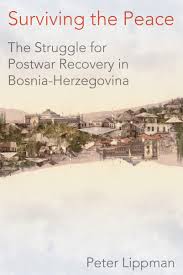
Peter Lippman’s book Surviving the Peace: The Struggle for Postwar Recovery in Bosnia-Herzegovina represents a unique effort. It is the work of an activist with a genuine love for Bosnia who has been researching the country for over twenty years, involving a level of fieldwork that very few, if any, foreigners can match. Lippman has travelled all over the country many times and extensively interviewed many local people in many different places, often tracing their personal stories over years or decades. Few PhD students working on Bosnia today manage to attain expertise in the local politics of even one locality, but Lippman’s achievement is to have attained expertise in several. This is a study of the struggle for refugee return in Bosnia following the war of 1992-1995, the struggle of ordinary people to rebuild their lives after the war, and the struggle against the abusive behaviour and corruption of nationalist politicians. One of the book’s five parts is devoted to Srebrenica and one to the Prijedor region, while the struggle in other parts of the country, including Sarajevo and Mostar, is also covered in considerable detail. Lippman’s book is a worthy companion to the excellent Bosnia Remade: Ethnic Cleansing and its Reversal by Gerard Toal and Carl T. Dahlman, which also focused on refugee returns but is now nearly ten years old. Lippman’s book is naturally up to date, but given the long period of its research, it does not focus only on recent years, but on the late 1990s and intervening periods as well, for a thorough treatment of the subject matter.
This is a multi-faceted study that carefully explains and analyses the interlocking factors of the refugee return movement, local Bosnian power-politics and the actions of the international administration. It does not limit itself to any one set of authorities or group of refugees, but considers the full picture, of all groups in relation to each other. Thus, for example, it examines in detail the politics of the Bosniak return movement to Srebrenica, but considers also the experience of the Serbs of Srebrenica. It focuses on obstruction to refugee returns not only by Bosnia’s Serb-majority entity Republika Srpska, but also by its larger entity, the Federation of Bosnia-Herzegovina. The reader gains an insight both into the differences in behaviour and policy of these different bodies of refugees and local and entity actors, but also into their relationship with one another, with an unprecedented level of inter-regional and inter-local comparison. The quality of nuanced analysis achieved makes this one of the best books on post-war Bosnia-Herzegovina.
Lippman is not a professional academic, which gives the book some advantages. The book was written primarily with the help of local people; the acknowledgements list very many Bosnian and other former-Yugoslav names, but relatively few foreigners; this is not a book that was written to please a Western academic audience, which gives it greater readability and authenticity. The reader is spared the frequently overlong, rambling and skippable introductory theoretical section with which many academic studies are burdened, and the book is admirably free of academic jargon or clichés. One of the limitations of this book, conversely, is the absence of a proper historical background or framework for understanding Bosnian politics and history since 1995. Long-term historical trends from the pre-1992 period are not really considered, while the treatment of the war of 1992-1995 is fairly token, and while these were not the subject of what is already a lengthy book, a more careful consideration of them would have provided more perspective on the period since 1995.

One or two erroneous clichés have crept into the book; the author describes the Serb exodus from Croatia in response to Operation Storm as ‘the largest single expulsion of the war’ (pp. 17-18), which is incorrect, given that the expulsion carried out by Serb forces across Bosnia-Herzegovina in the spring and summer of 1992 was much larger, also because the Serb exodus of August 1995 was ordered by the Serb occupation authorities in Croatia themselves, not forced by the Croatian authorities. The attribution of the ICTY’s acquittal of senior war-crimes suspects such as Momcilo Perisic to string-pulling by ‘powerful states in the world’, that Lippman cites with approval (pp. 175-176), is an unwarranted concession to a conspiracy theory that originated with the Serb nationalists, of the ICTY as a political or ‘imperialist’ tribunal. But these are minor gripes regarding a book that is, for the most part, mercifully free of such clichés.
The book’s fifth and final part concerns atrocity revisionism; the author competently summarises and critiques the appalling record of Bosnia war-crimes deniers such as Noam Chomsky and Diana Johnstone. This section will be appreciated by Bosnia activists and those with an interest in the phenomenon of atrocity revisionism more generally; it undoubtedly reflects the author’s personal interest, though thematically it does not have a lot to do with the principal subject matter of the book. A more relevant section, which the book lacks, would have been an analysis of the politics of the international community in relationship to Bosnia-Herzegovina since 1995, which would have provided an overview of the international context in which the struggle for post-war recovery in the country operates. These caveats, however, do not make this book any less essential reading for anyone with an interest in contemporary Bosnia-Herzegovina.
Whose Bosnia ? Nationalism and Political Imagination in the Balkans, 1840-1914

Review of Whose Bosnia ? Nationalism and Political Imagination in the Balkans, 1840-1914, Edin Hajdarpasic (Ithaca and London: Cornel U.P., 2015; pp. xii + 271. £34.00). Originally published by the English Historical Review.
Although Bosnia-Herzegovina has been the subject of a considerable amount of academic study in the past quarter century, this has been disproportionately focused narrowly on its recent history and politics and contemporary society – since 1992, and particularly since 1995. Few have been willing to explore the country’s earlier history – for all that the events of the 1990s and after cannot be understood without a proper knowledge and understanding of this earlier history. It is therefore a pleasure to discover Edin Hajdarpasic’s study of nationalist ideas and texts in the period 1840-1914. Through extensive research into texts previously neglected by scholars outside of the former Yugoslavia, and even by many inside it, he provides a wealth of valuable new information. This work is richly illustrated with quotes by Bosnian, Croatian and Serbian authors which any true Bosnia specialist will find fascinating.
The author pertinently compares nationalism in Bosnia-Hercegovina to the popular video game Tetris, in which there is no definite or stable solution, but in which every solution adds a layer while throwing up new gaps that need filling, so that there is ceaseless motion and struggle. He denies that the nationalist imaginations of youth in Bosnia-Hercegovina before 1914 were a ‘ticking time-bomb’ leading teleologically to the Sarajevo assassination, instead repeating a quote from the Italian avant-garde writer Giorgio Manganelli, to describe them as ‘a ticking sound that simulates thought and measures out… hours which still do not exist, which have not yet begun’ (p. 160) – something that will hardly be controversial. Hajdarpasic in general does not give broad, sweeping conclusions; as the author notes, each of the chapters ‘can be read as a thematic essay in itself’ (p. 15), and is likely to provoke most interest for the observations it makes along the road.
This work is essentially an analysis of texts, which are mostly viewed in their own right, with relatively little wider contextualisation – almost as if there were ‘nothing outside the text’, as postmodernists are said to believe. This restricts the scope of the analysis. For example, the author notes that the poem ‘Sad Bosnia’ by Mate Topalovic had immense influence on the discourse of subsequent generations of politically aware South Slavs, in terms of establishing an image of Bosnia-Hercegovina’s suffering under foreign rule – first Ottoman, then Habsburg. This is an important observation. Yet there is almost no evaluation here of whether Bosnia-Hercegovina was indeed ‘sad’; i.e. of how oppressed and suffering or otherwise its population really was. Hajdarpasic discusses at some length the writings of Petar Kocic, a radical agitator on behalf of peasant economic rights and interests in the Austro-Hungarian period. Again, Kocic is a fascinating figure who has been almost wholly neglected by Western scholars of Bosnia, and Hajdarpasic is right to focus on him. But there is almost no actual discussion of what these peasant interests or peasant conditions might have been, or of how valid his ideas consequently were. Hajdarpasic puts forward the interesting thesis that ‘the Habsburg administration played a pivotal role in constructing Bosnian youths as an unstable – and possibly violent – political subject’ (p. 147); in other words, that the imperial regime’s nervous discourse became a sort of self-fulfilling prophecy that culminated in Gavrilo Princip and the Sarajevo assassination. But there is no proper consideration of the political, social or economic factors that might have produced an assassin like Princip, nor of the fact that he was acting as an agent of the Black Hand – an organisation established by army officers in neighbouring Serbia, with very different backgrounds to Princip’s; Dragutin Dimitrijevic-Apis, the mastermind behind the assassination, does not get a mention.

What historical contextualisation that is given is not always reliable. Thus, Hajdarpasic claims that ‘Ilija Garasanin and Jovan Ristic took great pains to keep Serbia out of any potentially disastrous wars’ (p. 101), which is the opposite of the truth, since it was Ristic who engineered Serbia’s disastrous war with the Ottomans in 1876-77, while Garasanin had been dismissed as prime minister by Prince Mihailo in 1867, precisely because he wanted to drag Serbia into a suicidal war with them. The author claims that in the uprising of 1875-78 ‘no great national movement took place in Bosnia itself’ (p. 106), even though the uprising produced an all-Bosnian rebel assembly and government with concrete national goals. He claims in relation to the uprising that ‘there was no significant mobilisation of South Slavic youth for action in Ottoman Bosnia’, citing the examples of the United Serbian Youth and the Bosnian activist Vaso Pelagic, who he says ‘exercised little influence in his home province after his expulsion from Sarajevo in 1869’ (pp. 133-134). Yet activists of the United Serbian Youth, in particular those grouped around Svetozar Markovic, had been preparing for the uprising in Bosnia since 1871 and actively supported it once it broke out, while Pelagic himself played an active role in it. One of the most vocal supporters of the uprising, Markovic’s friend and follower, the young Nikola Pasic, was hardly an insignificant figure in Serbian history. Even Hajdarpasic’s own reference mentions ‘hundreds’ of Serbian, Croatian and Slovene youth joining the uprising (p. 244). Hajdarpasic cites Slobodan Jovanovic as someone who was ‘not enthused with the exhaltation of heroic action over the seemingly quiet everyday life’ (p. 153). Yet Jovanovic is a bad example, given he was a political ally of Dimitrijevic-Apis – war-monger, adventurer and regicide par excellence – and was subsequently part of the conspiratorial circle that overthrew the Belgrade government in March 1941 to plunge Yugoslavia into war with Germany.
Hajdarpasic has produced a work throwing valuable light on nationalist thinking in Bosnia-Herzegovina in the nineteenth and early twentieth centuries, one that will be a resource for all future scholars of the subject. It is to be hoped that the latter will further explore and develop the themes that it raises.
Arnesa Buljusmic-Kustura’s ‘woke’ excuses for Jeremy Corbyn’s Balkan genocide revisionism

Jeremy Corbyn, Labour’s former leader, is a Balkan genocide revisionist. At the time of the NATO bombing of Ratko Mladic’s Bosnian Serb forces in 1995, shortly after the genocidal Srebrenica massacre, the ‘Committee for Peace in the Balkans’, of which Corbyn was a prominent member, published a statement that failed to condemn the genocide and instead condemned the NATO bombing. It complained that ‘The one-sided nature of NATO’s intervention is breathtaking’ and ‘Bosnian forces were reported by the Dutch UN commander in Srebrenica to have burned 200 Serb villages in the area surrounding the town, with no question of a NATO response.’
The Committee for Peace in the Balkans was co-founded by Corbyn’s close collaborator Diane Abbott and by Sir Alfred Sherman, an advisor to Radovan Karadzic and Ratko Mladic, who made racist claims of a ‘European Islamistan in Bosnia and a Greater Albania’. The further activities of Corbyn as a member of this group have been documented by the investigative journalist Iggy Ostanin, whose work I draw upon here. This included Corbyn meeting a Serbian diplomat on the eve of NATO’s military intervention in Kosovo, to warn him that ‘exaggerated claims’ of ethnic cleansing would be used as a ‘pretext’ for intervention.

On 17 July 1995, immediately following the Srebrenica genocidal massacre, Corbyn was one of 28 MPs who signed an early day motion (EDM) in the House of Commons demanding that the US reject calls to lift the arms embargo against the people targeted by genocide or to intervene militarily to defend them. It ‘deplores calls in the USA led by Senator Bob Dole for a unilateral lifting of the arms embargo in former Yugloslavia’ and that ‘believes that the advocates of “lift and strike” are playing with fire and risking spreading the conflict throughout the Balkans; and calls on the US Congress to reject this call and, failing that, for President Clinton to veto it and thereby show solidarity with those countries in NATO and the UN who have put their own personnel at risk in an effort to save lives.’
In 2004, Corbyn signed an EDM in support of a column by the notorious denier of Milosevic’s crimes, John Pilger. The EDM spoke of ‘fraudulent justifications for intervening in a “genocide” that never really existed in Kosovo’ and claimed that ‘the final count of bodies found in Kosovo’s “mass graves” was 2,788.’
Somewhat later, in 2014, Corbyn published an article in the Morning Star, endorsing the analysis of the NATO intervention made by Noam Chomsky, a notorious denier of the Srebrenica genocide. Corbyn wrote: ‘Not long after this the war in former Yugoslavia and the atrocities at Srebrenica enabled Nato to supplant the UN forces and become embroiled in a 78-day bombardment of Serbia. At the end of that conflict, in 2001, Noam Chomsky analysed the whole war and concluded that the real “winners” were Western arms manufacturers and that “the US was able to enforce its domination over the strategic Balkans region, displacing EU initiatives at least temporarily, a primary reason for the insistence that the operation be in the hands of Nato, a US subsidiary.”’
Sad though it is to say, a Bosnian activist in the UK, Arnesa Buljusmic-Kustura, who describes herself as an ‘analyst’, ‘researcher’ and ‘lecturer on genocide and fascism’, with over 32,000 Twitter followers and who serves as Operations Manager for Remembering Srebrenica, has repeatedly tweeted in defence of Corbyn in relation to former Yugoslavia; either defending him or making excuses for him. Buljusmic-Kustura was a strong supporter of Corbyn’s campaign to become prime minister of the UK, and she also speaks and writes against genocide denial. Her contortions are what happens when someone attempts to reconcile opposition to genocide denial with radical ‘woke’ politics.
Initially, she claimed there was no evidence that Corbyn was a Bosnian genocide denier, and that the accusations against him were a ‘useful tool’ of the Tories:


Acknowledging that Corbyn had signed the EDM in relation to Kosovo in 2004, and that it endorsed the ‘notorious genocide denier’ John Pilger and that this deserved to be criticised, she nevertheless attempted to mitigate his action by claiming that the EDM ‘focuses more on the human cost of intervention rather than downplaying the war crimes committed by Serbian forces‘ (to recap: the EDM spoke of ‘a “genocide” that never really existed” and claimed that the ‘the final count of bodies found in Kosovo’s “mass graves” was 2,788’).
She also tried to claim that any conflation of his stances on Bosnia and on Kosovo was simply a ‘propaganda tool’ – as if his positions on the two conflicts had been different – and that anyway Britain in general had a bad position, so his own position was unexceptional:
Following Corbyn’s defeat in the UK general election in 2019, she continued to defend him from the charge of Bosnian genocide denial. She claimed that accusations of his genocide denial were part of a right-wing attempt to manipulate Bosnians and ‘well-meaning liberals’ against him:



Next, when more evidence of his record was pointed out to her, she claimed it arose from ‘misplaced idealistic leftism’ and that it was really about being ‘critical of the NATO bombing’, and that Corbyn was too unimportant at the time to matter anyway. She also shifted from defending him from ‘genocide denial’ to defending him from ‘outright genocide denial’ – a significant moving of the goalposts:
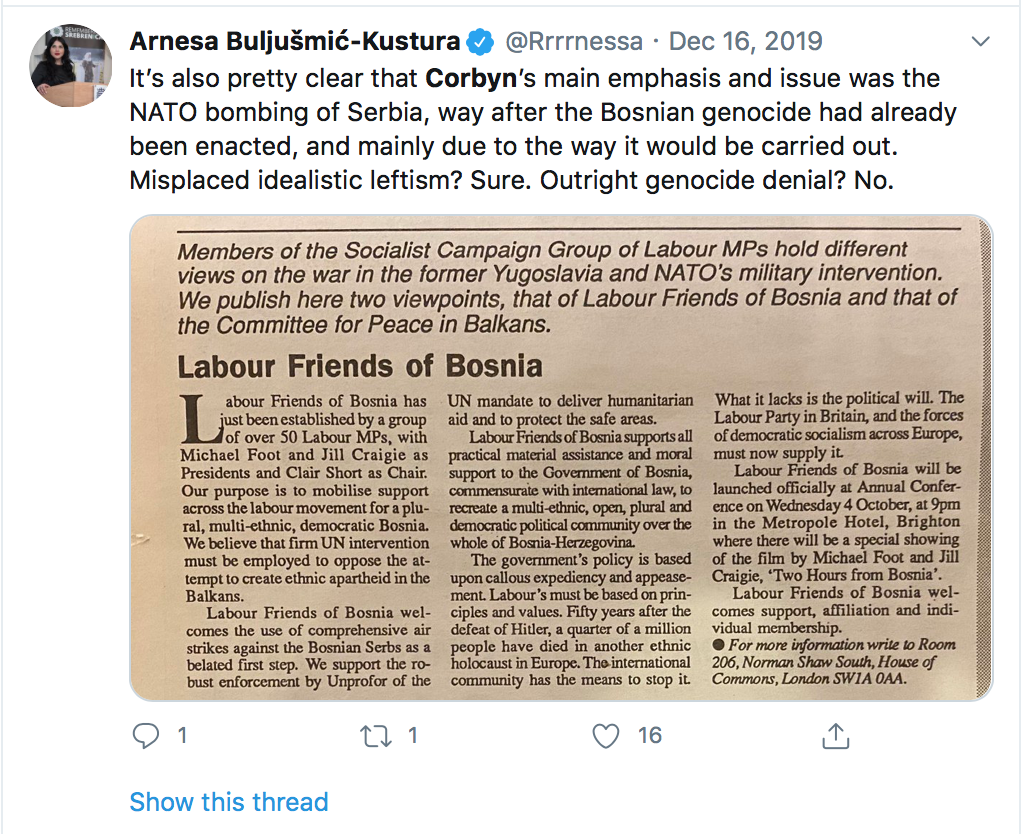
Finally admitting that he had taken a ‘bad line’ on Bosnia, she nevertheless put it down to ‘an attempt to criticize the NATO bombings’, but emphasised her common ground with him regarding criticism of those bombings.


Further excuses offered for Corbyn’s stance was that it simply reflected the stance of the mainstream media and UN, that he was too unimportant at the time to matter anyway, and that people should be angry with the Tories instead:

Other mitigating factors proffered were that Corbyn had not written the EDM, merely signed it, and that it anyway only related to Kosovo, not to Bosnia:


Truly disappointing that anyone claiming to be an expert on, and opponent of, Balkan genocide denial should try so hard to shield someone like Corbyn from fully justified condemnation. When someone’s extreme-left politics and opposition to genocide denial cannot be reconciled, it is almost always the extreme leftism that comes out on top.
Update: Buljusmic-Kustura’s views on Jewish issues turn out to be very ‘Corbynite’ as well:
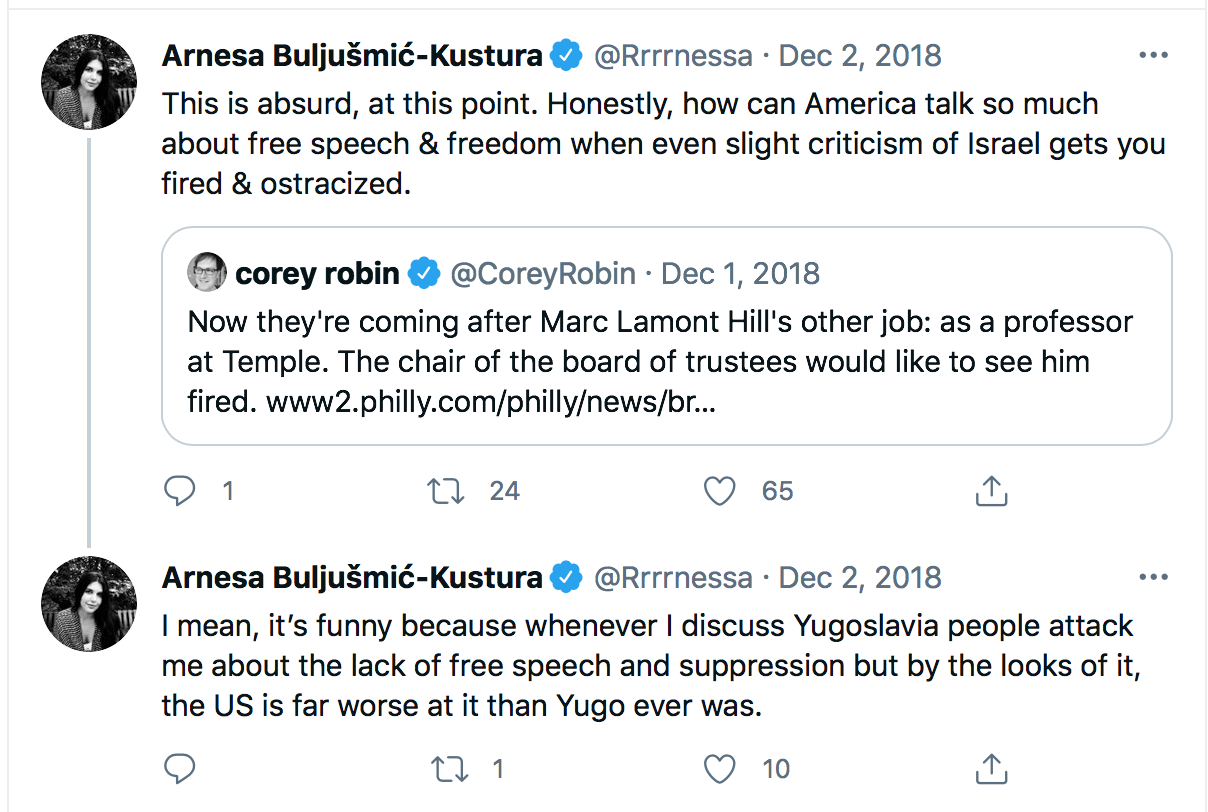

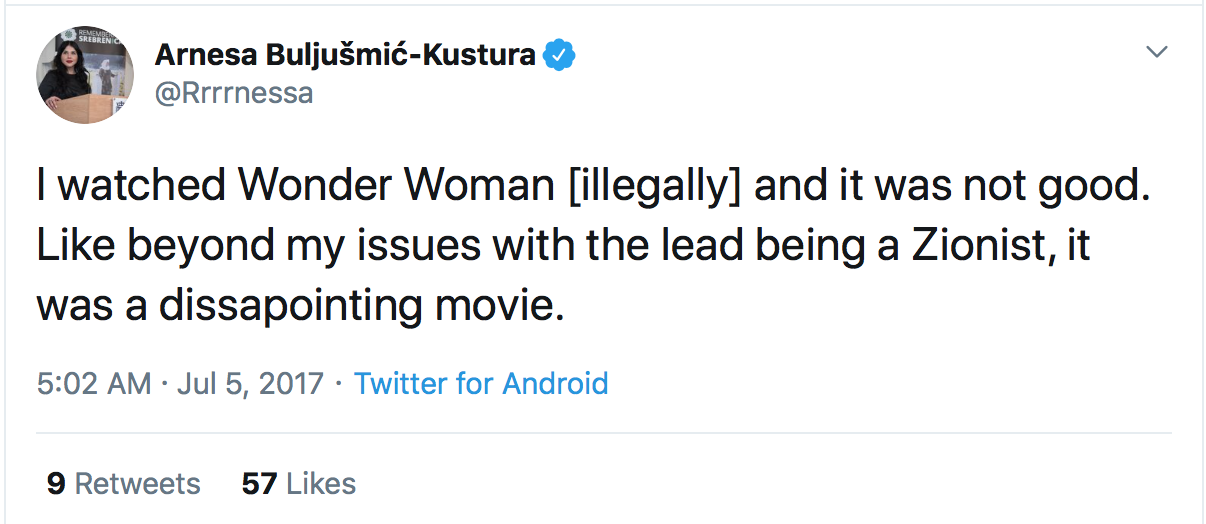
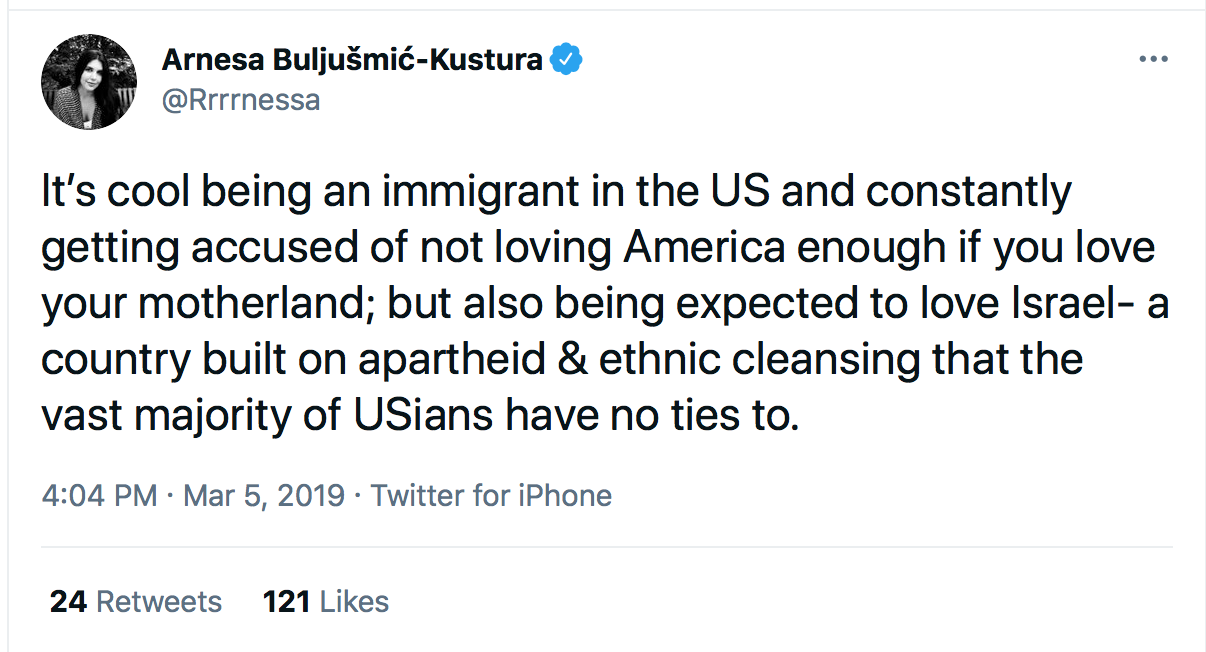



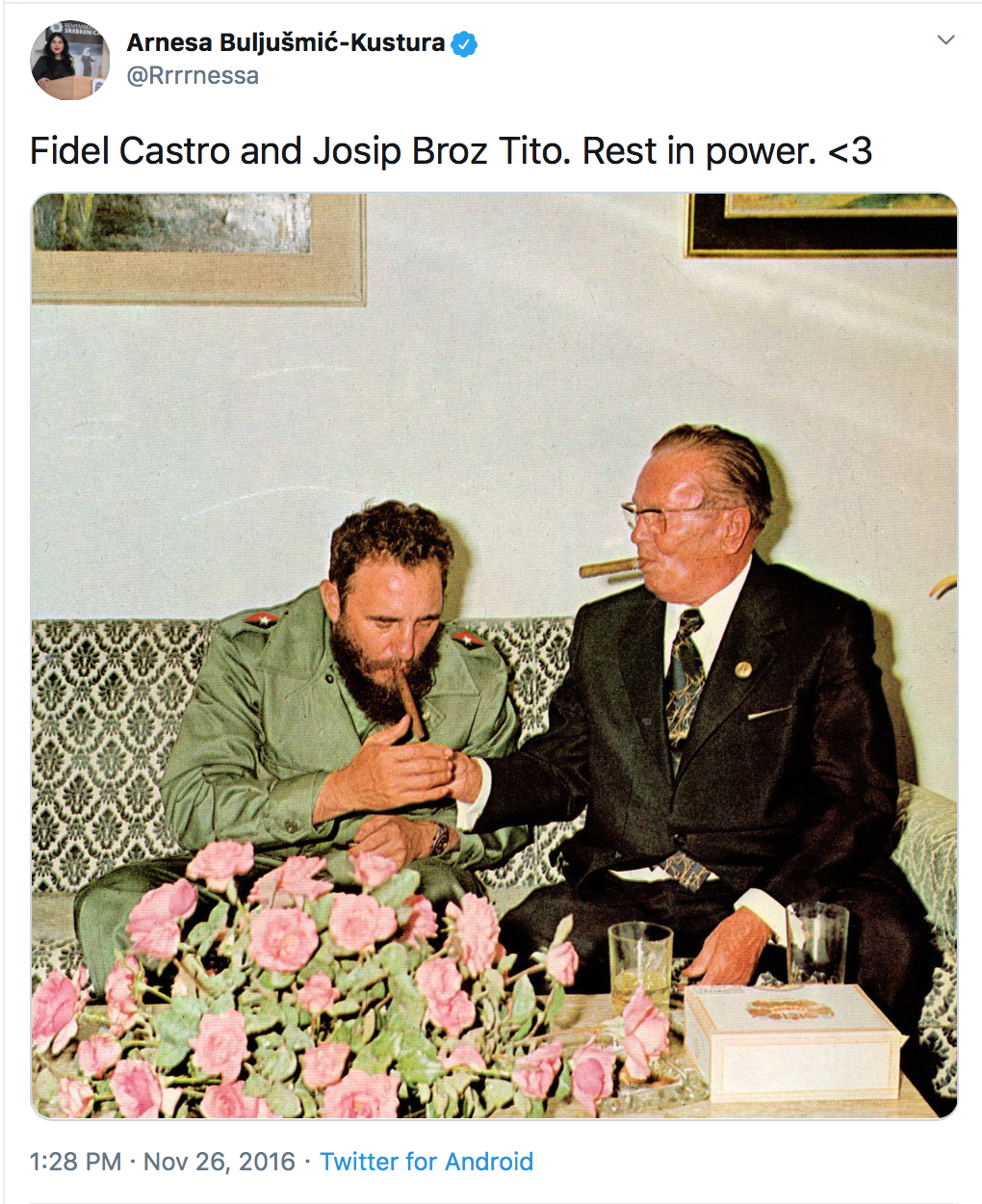
Pic: For the woke, any misdemeanour can be overlooked…
Should Croatia apologise for the Bleiburg massacre ?

This article was published today in BCS translation by Al Jazeera Balkans
The Bleiburg massacre is the term used to refer to the mass murder of tens of thousands of prisoners of war and civilian prisoners from the ranks of pro-Nazi quislings and collaborators, by the Communist-led Yugoslav Partisans at the end of World War II. Named after the Austrian town of Bleiburg near the Yugoslav border, where the repatriation of these prisoners began, the killing process involved the forced march of the prisoners and their mass execution at multiple sites. The largest component of those killed were Croats who had served the Nazi-puppet ‘Independent State of Croatia’ (NDH) and its Croat-fascist (Ustasha) leadership, but they included also Slovenes, Serbs and others.
The massacre became a cause celebre for the anti-Communist Yugoslav emigration after World War II. It implicated the British forces in Austria, who had either refused to accept the surrender of the prisoners and insisted they surrender to the Partisans, or had actually repatriated them to Yugoslavia and their deaths. The legacy of the massacre remained controversial after the war, because on the one hand the Yugoslav Communists and their supporters refused to accept any wrongdoing, while on the other, its commemoration was often bound up with expressions of support for the Ustasha regime. For anti-Communist Croats, including but not limited to Ustasha sympathisers, the massacre served as a foundation myth for their self-identification as victims of the Yugoslav Communist regime, which they identified as anti-Croat. Whereas this regime, liberal and left-wing Croats and the anti-fascist world generally have focused on the genocidal crimes of the Ustashas against Serbs, Jews and others, in particular at the notorious death-camp Jasenovac, anti-Communist Croats have commemorated the Bleiburg massacre. The choice of commemoration – Jasenovac or Bleiburg – depended upon political orientation and family background. Croats remain divided over this to this day, reflecting the nation’s division since World War 2 between pro-Partisan and anti-Communist camps.
Of course, the crimes of Jasenovac and Bleiburg were not equivalent: Jasenovac involved actual genocide against whole groups targeted purely on the basis of their ethnicity, while Bleiburg was a case of the victors in a civil war massacring the losers. The Partisans were not attempting to destroy or exterminate the Croat nation, as the Ustashas were the Serbs and Jews. Nevertheless, Bleiburg was undoubtedly a war crime: many civilians were murdered, as were many conscript soldiers who were not guilty of any crimes. And though many of those killed in the Bleiburg massacre were indeed Ustasha war-criminals, these too should have been given fair trials, not extra-judicial executions. The Croatian parliament supports the commemoration of Bleiburg, and Croatia’s Social Democratic president Zoran Milanovic has said he will lay a wreath at one of the massacre sites this year, but the commemoration has not received acceptance from liberal Croatia or from the wider liberal-democratic world. This is in part because of its association with pro-Ustasha revisionism, but also out of simple unwillingness to acknowledge Partisan or Allied war-crimes against Axis or pro-Axis victims. Nobody has ever been punished for Bleiburg. There is no doubt that many people from non-Communist families whose relatives were murdered or persecuted by the Communist remain hurt and bitter about this. Hence, the issue remains a wound that divides Croats.
Liberal principles would suggest that war-crimes by all sides should be acknowledged and repudiated if post-war reconciliation is to be achieved. This is the principle followed by the International Criminal Tribunal for the former Yugoslavia (ICTY) which has sought to bring to justice war-criminals from all sides in the 1990s wars: Serbs, Croats, Bosniaks, Albanians and Macedonians alike. The same principle would suggest that an acknowledgement and apology are due for Bleiburg too. But this raises the question: who should give them ?
In fact, Bleiburg was a crime in which Croats were perpetrators as well as victims, and for which the state of Croatia was as responsible as any other. The armed forces that carried out the massacres were Yugoslav and Partisan. Croatia was a founding member of the Yugoslav federation, and had, until comparatively late in the war, contributed more Partisans than any other Yugoslav land. Tito himself was a Croat from Croatia. The contemporary Republic of Croatia is legally one of the successor states of the Socialist Federative Republic of Yugoslavia. The post-Communist Croatian constitution since 1990 has explicitly included among its ‘historical foundations’ the ‘establishment of the foundations of state sovereignty during the course of the Second World War, as expressed in the decision of the Territorial Antifascist Council of the National Liberation of Croatia (1943) in opposition to the proclamation of the Independent State of Croatia (1941), and then in the Constitution of the People’s Republic of Croatia (1947) and in all subsequent constitutions of the Socialist Republic of Croatia (1963-1990)’. In other words, the contemporary Croatian state formally affirms the Partisan legacy against the NDH legacy.
Furthermore, the Croatian struggle for independence in the 1990s was led by former Partisans, most notably Franjo Tudjman as president, Janko Bobetko as chief of general staff of the Croatian Army and Martin Spegelj as defence minister and founder of the Croatian Army, as well as Josip Manolic as prime minister and Josip Boljkovac as interior minister. The paradox for the Croatian right is that they commemorate Bleiburg while celebrating a Croatian independence that was achieved by former members of the army responsible for Bleiburg, and revere Tudjman, who rose to the rank of general in that army. Indeed, Tudjman until the very end of his life, continued to praise Tito for his services to the Croat nation, even suggesting that he may not have given the orders for the Bleiburg massacres. While Tudjman lived, a prominent square in central Zagreb continued to bear the name ‘Marshal Tito Square’. While there is a perception among conservative Croats that it is specifically the Croatian left that needs to recognise and apologise for Bleiburg, the reality is that the main Croatian centre-right party, the Croatian Democratic Union (HDZ) – founded by Tudjman and including many former Communists among its ranks – is just as bound up in the legacy of the Communist regime, including Bleiburg, as the left’s Social Democratic Party. Bleiburg was a crime of the Croatian state, not just of the Croatian left.
Paradoxically, the crime of Jasenovac is more readily associated with Croatian guilt than Bleiburg, even though Jasenovac was the work of a Croat-fascist puppet state that was destroyed and repudiated by the Partisans who founded the current Croatian state, which is not the legal successor of the NDH and is not legally culpable for its crimes. Croatian President Ivo Josipovic in 2010 nevertheless expressed regret for Jasenovac and other Ustasha crimes, which was the correct thing to do, given that members of his nation had perpetrated them.
There is a case for saying that the Croatian president should apologise for the Bleiburg massacre on behalf of the Croatian state. This could help to bring closure to the relatives of the victims. It could mean contemporary mainstream, liberal, anti-fascist Croatia acknowledging and taking responsibility for the crimes carried out by its predecessors. It would shatter both the right-wing narrative, that treats Croatia purely as a victim of, rather than a participant in, the actions of the Communists and Partisans, and the left-wing narrative of Partisan purity. It would affirm the fact that the contemporary Croatian state was founded on an anti-fascist basis, without glorifying or whitewashing the Communists and Partisans, instead by owning their negative side as well as their positive side. It could help to heal the rift between the two Croatias.
For all these reasons, it is doubtful that such an apology will ever happen. The left is unwilling to dwell on Partisan crimes, while the right is unwilling to acknowledge them as their own. The left is attached to a sanitised view of the Partisans, while the right is attached to a narrative of Croatia as innocent victim of Communism. There is too much bound up with these competing myths for any Croatian politician to take such a politically risky step of challenging them. Croatia will remain divided over Bleiburg, so long as its politicians want it to be.
Archives
- July 2023 (1)
- June 2023 (1)
- April 2023 (1)
- April 2021 (1)
- September 2020 (2)
- August 2020 (1)
- June 2020 (2)
- May 2020 (1)
- January 2020 (2)
- October 2019 (1)
- September 2019 (3)
- October 2018 (1)
Categories
- Abkhazia
- Abortion
- Afghanistan
- Albania
- Alex Callinicos
- Anti-Semitism
- Arabs
- Armenians
- Australia
- Balkans
- Basque Country
- Biljana Plavsic
- BNP
- Bosnia
- Brexit
- Britain
- Bulgaria
- Catalonia
- Caucasus
- Central Europe
- Chechnya
- Conservatism
- Crimea
- Croatia
- Cyprus
- Darfur
- Denmark
- East Timor
- Education
- Egypt
- Environment
- European Union
- Faroe Islands
- Fascism
- Feminism
- Finland
- Former Soviet Union
- Former Yugoslavia
- France
- gender
- Genocide
- Georgia
- Germany
- Greece
- Greenland
- Heathrow
- Holocaust denial
- Iceland
- Immigration
- India
- Indonesia
- Iran
- Iraq
- Ireland
- Islam
- Islamophobia
- Israel
- Italy
- Jews
- Kosovo
- Kurds
- LGBT
- Liberalism
- Libertarianism
- Libya
- London
- Macedonia
- Marko Attila Hoare
- Middle East
- Misogyny
- Moldova
- Montenegro
- NATO
- Neoconservatism
- Neoliberalism
- Netherlands
- Norway
- Pakistan
- Palestine
- Political correctness
- Portugal
- Racism
- Red-Brown Alliance
- Russia
- Rwanda
- Sami
- Scandinavia
- Scotland
- Serbia
- Slovakia
- Slovenia
- South Ossetia
- Spain
- Sudan
- Svalbard
- Sweden
- SWP
- Syria
- The Left
- Transnistria
- Transphobia
- Transport
- Turkey
- UCU
- Ukraine
- Uncategorized
- University College Union
- White supremacy
- World War II
- Zimbabwe
RSS
Entries RSS
Comments RSS
 A blog devoted to political commentary and analysis, with a particular focus on South East Europe. Born in 1972, I have been studying the history of the former Yugoslavia since 1993, and am intimately acquainted with, and emotionally attached to, the lands and peoples of Croatia, Bosnia-Hercegovina and Serbia. In the summer of 1995, I acted as translator for the aid convoy to the Bosnian town of Tuzla, organised by Workers Aid, a movement of solidarity in support of the Bosnian people. In 1997-1998 I lived and worked in Sarajevo, Bosnia-Hercegovina. In 1998-2001 I lived and worked in Belgrade, Serbia, and was resident there during the Kosovo War of 1999. As a journalist, I covered the fall of Milosevic in 2000. I worked as a Research Officer for the International Criminal Tribunal for the former Yugoslavia in 2001, and participated in the drafting of the indictment of Slobodan Milosevic.
A blog devoted to political commentary and analysis, with a particular focus on South East Europe. Born in 1972, I have been studying the history of the former Yugoslavia since 1993, and am intimately acquainted with, and emotionally attached to, the lands and peoples of Croatia, Bosnia-Hercegovina and Serbia. In the summer of 1995, I acted as translator for the aid convoy to the Bosnian town of Tuzla, organised by Workers Aid, a movement of solidarity in support of the Bosnian people. In 1997-1998 I lived and worked in Sarajevo, Bosnia-Hercegovina. In 1998-2001 I lived and worked in Belgrade, Serbia, and was resident there during the Kosovo War of 1999. As a journalist, I covered the fall of Milosevic in 2000. I worked as a Research Officer for the International Criminal Tribunal for the former Yugoslavia in 2001, and participated in the drafting of the indictment of Slobodan Milosevic.